Medina
We completed our previous journey to Saudi Arabia on the Edge of the World, and concluded it with great regret about the closed nature of the country.
Two cities, the glassy Riyadh and the wooden Jeddah, turned out to be too little to learn about the Arabian Peninsula, the mysterious heart and soul of the Muslim world.
“Ancient Madain Saleh, the green oases of Abha and Jizan, radiant Medina, and the sacred city of Mecca,” as we dreamily listed the places we couldn’t visit. Some are difficult to reach through the scorching desert. Others can only be visited by devout Muslims, and with all our wish we could never manage to get there...
Well, not that I want to say that we couldn’t at all; and all the efforts in the world would have gone to waste until...
Let’s just say that our time has come again.
Mosque-City
There is one misconception. Everyone is convinced that both cities, Mecca and Medina, are closed to non-Muslims. In reality, anyone of any faith can visit Medina. However, entering the Mosque of the Prophet Muhammad and the adjacent square is only allowed for Muslims.
The square in front of the mosque is surrounded by a high fence. From each of four winds of the world, a large gate is made in this fence, which remain open around the clock. A guard is standing next to every gate.
The security here is purely decorative. They may stop someone, let’s say, if one decides to enter the mosque in shorts. Nobody tests anyone’s knowledge of Islam, so everybody pass through freely.
Right after the gates — a sci-fi movie scene. Giant mechanical flowers grow on the square.
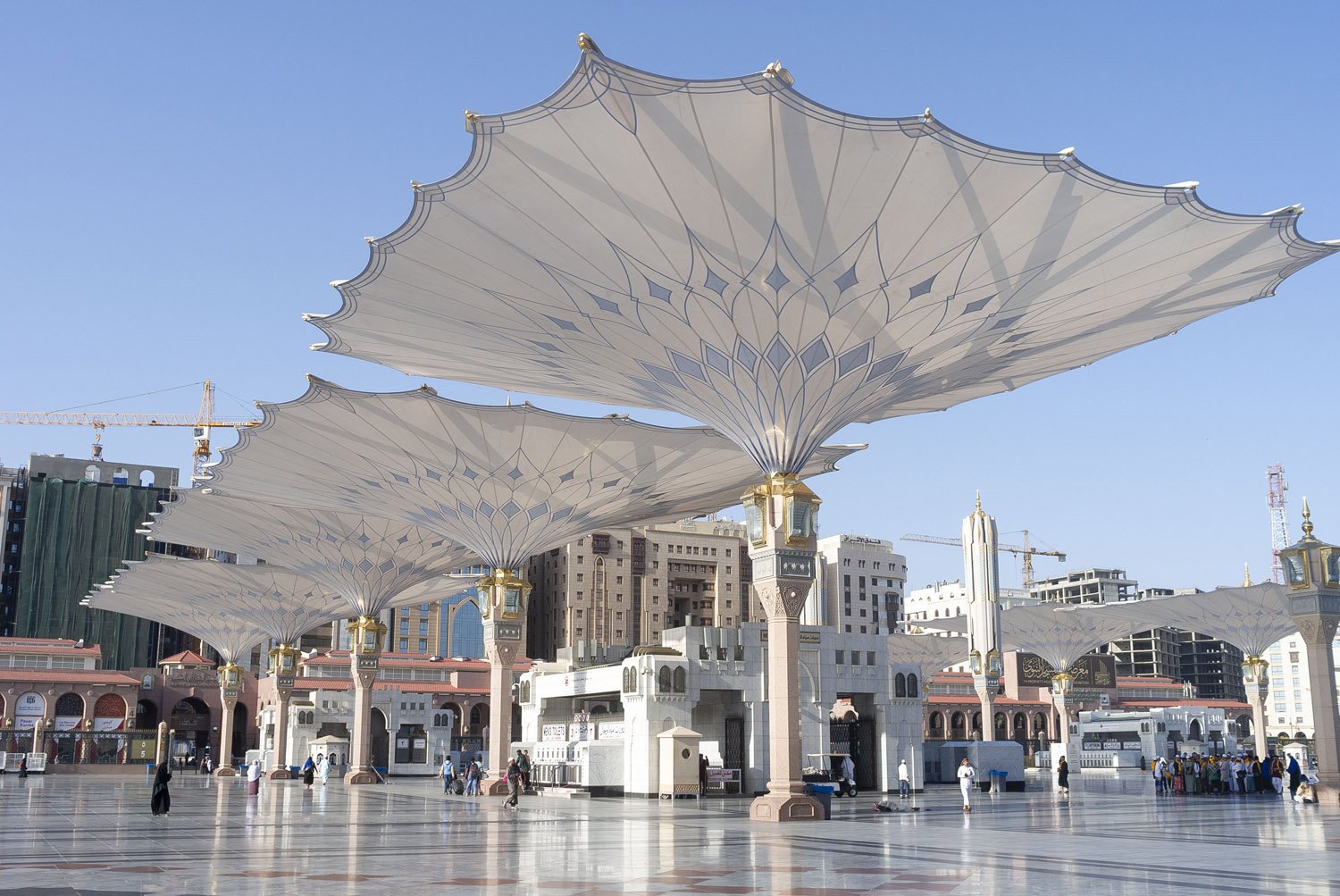
The idea to make umbrellas in the form of flowers was made up by personally King Abdul-Aziz. With this idea, he approached the German architectural bureau SL Rasch, which has been known since 1980 for its solutions for Saudi mosques.
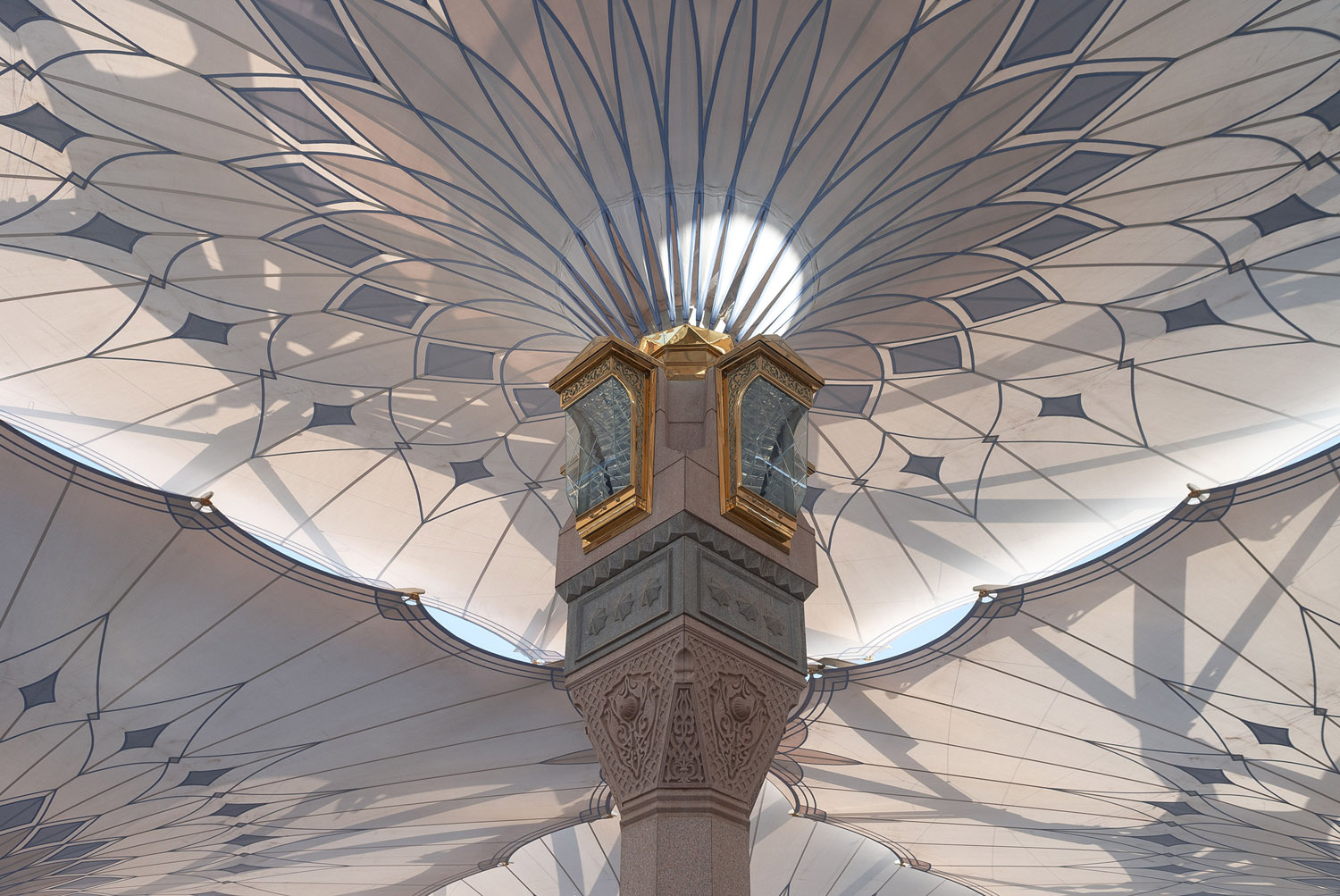
The bureau refined the project. They selected a special Teflon fabric for the umbrellas, which not only protects from sunlight but also completely blocks ultraviolet rays.
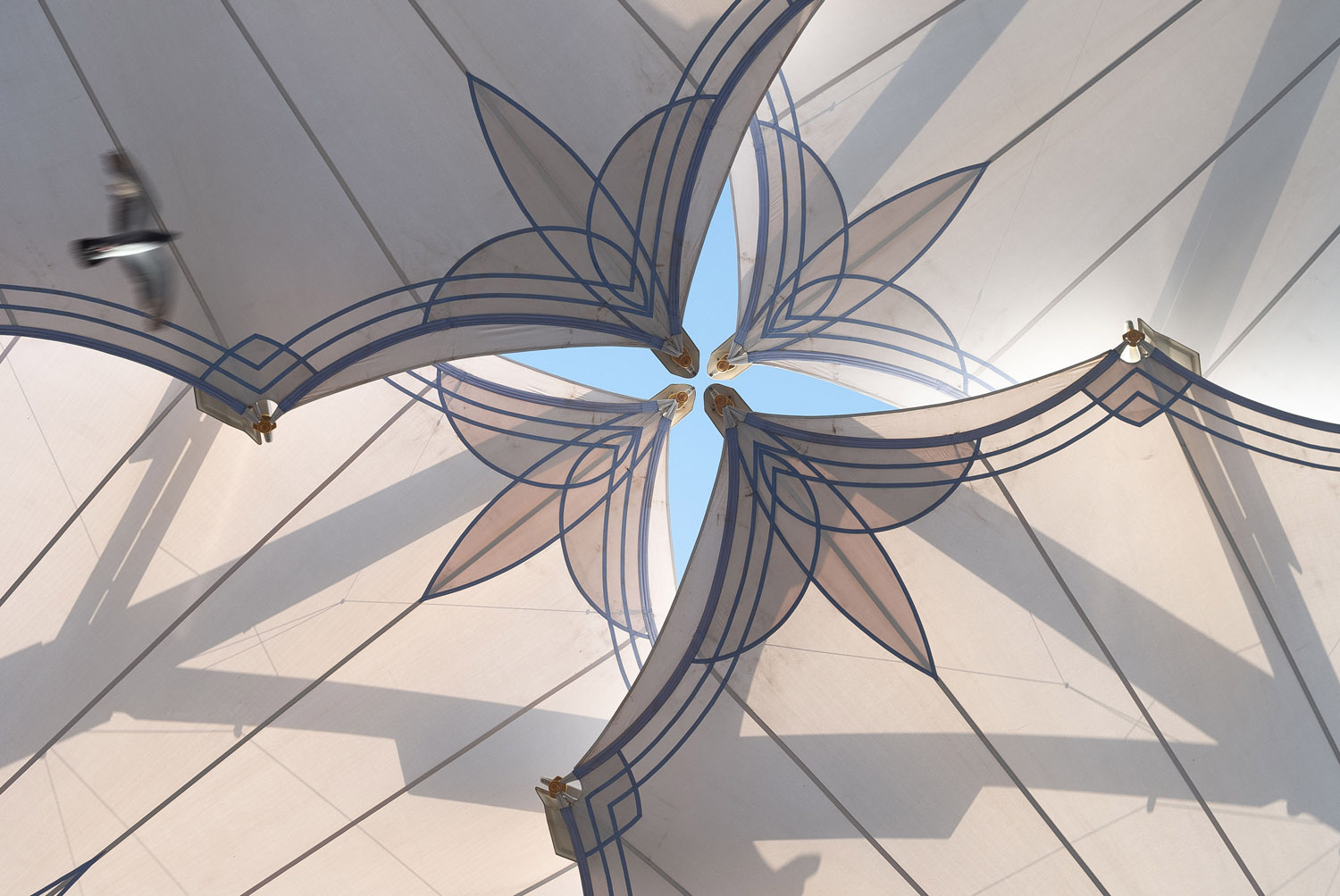
The project was completed in 2011. They planted 250 mechanical tulips on the square. The project costed an astronomical sum of one and half billion dollars.
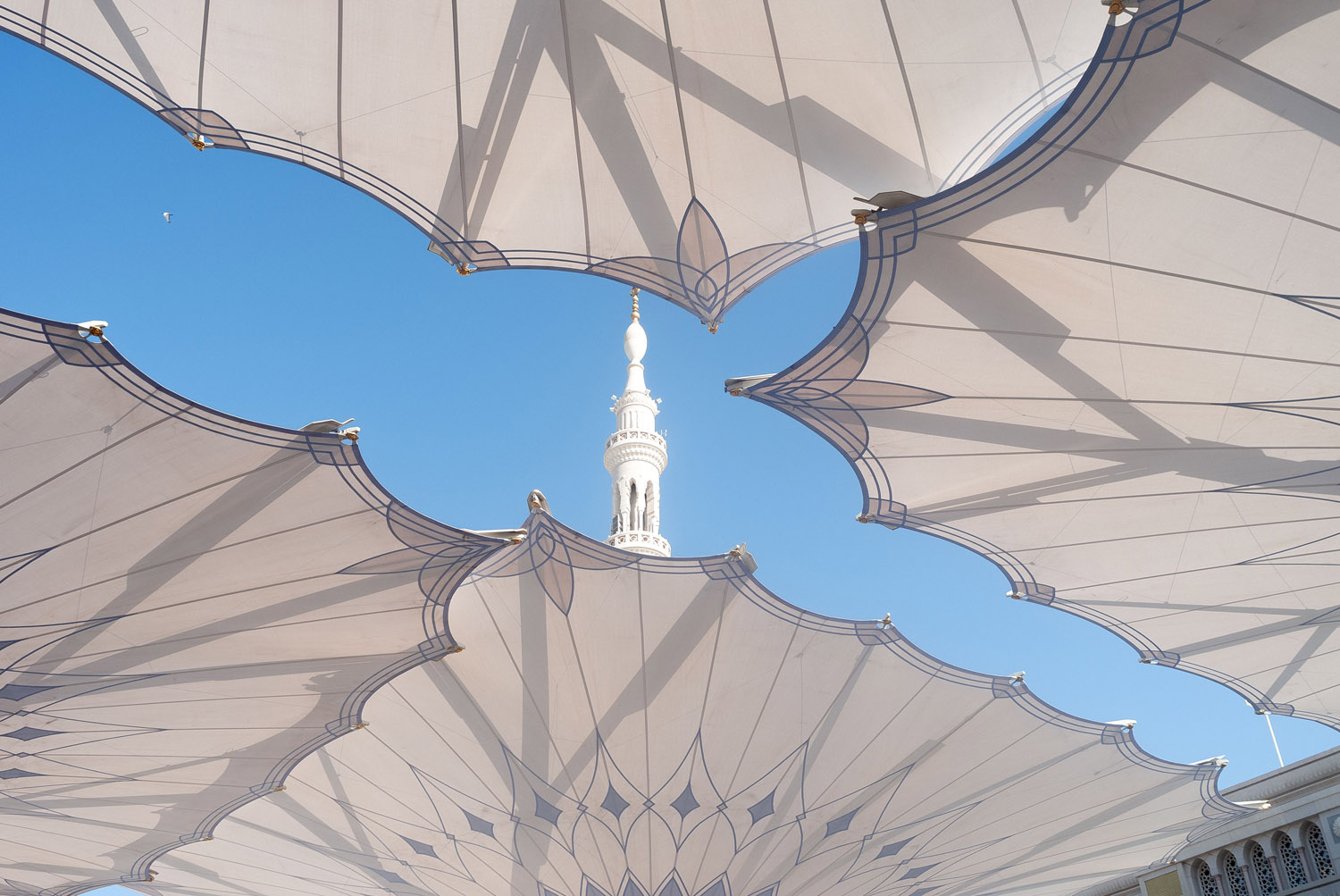
Indeed, the project itself is truly astronomical. The vast lifeless square has been transformed into a gigantic garden of mechanical tulips.
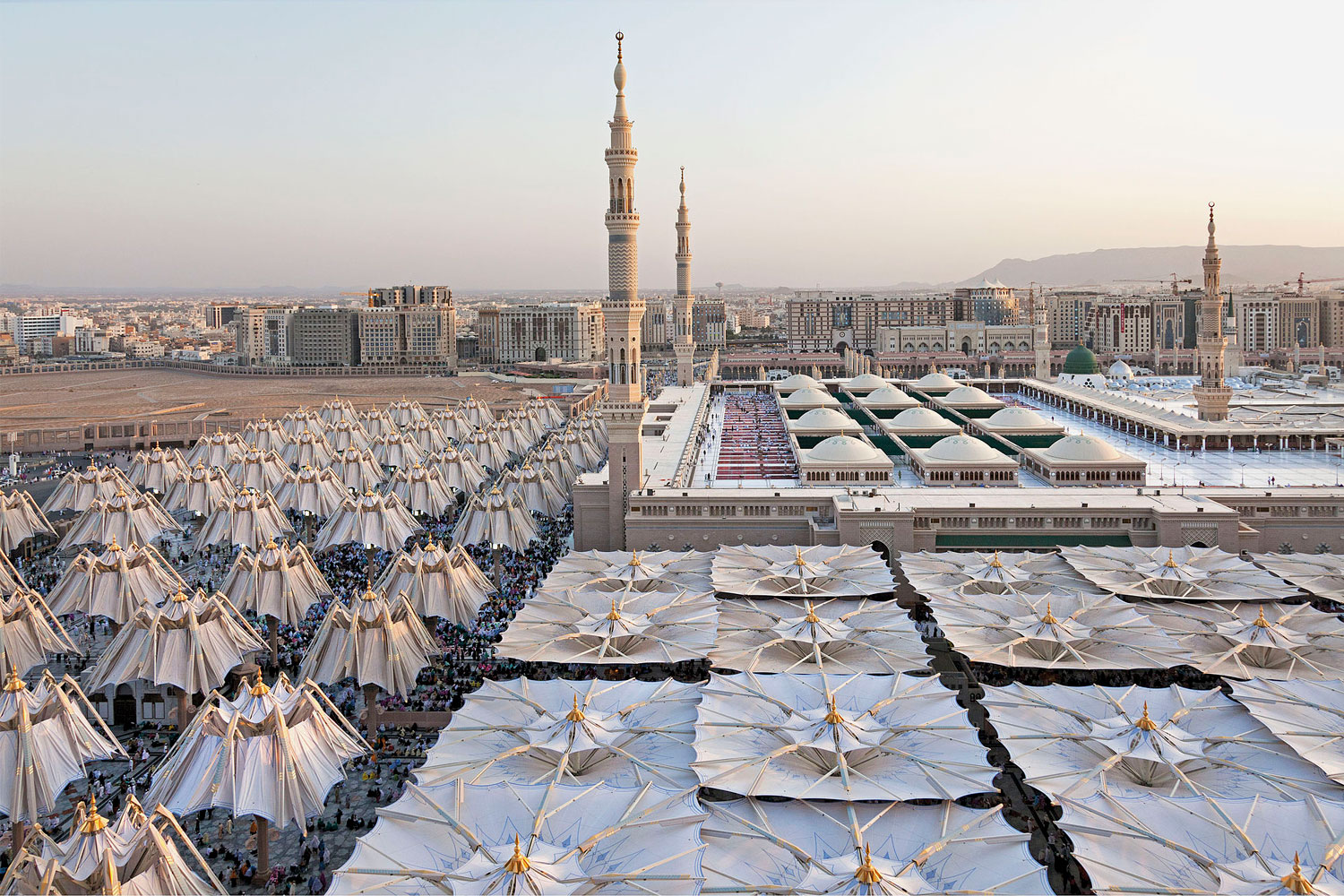
But the most important thing of this project is not the beauty of the decorations. The point is that these flowers bloom every morning and fold into buds every evening!
As soon as the sun rises, a light sensor is triggered, and the flower bud begins to slowly open. The flower remains unfold throughout the day and closes again in the evening.
This is the real sci-fi.
The umbrellas is a perfectly thought-out solution to a whole set of tasks.
Firstly, they protect the worshipers from the sun. The mosque cannot accomodate everyone, so many have to pray outside. The pavement gets overheated and turns into a frying pan. The umbrellas create shade and coolness.
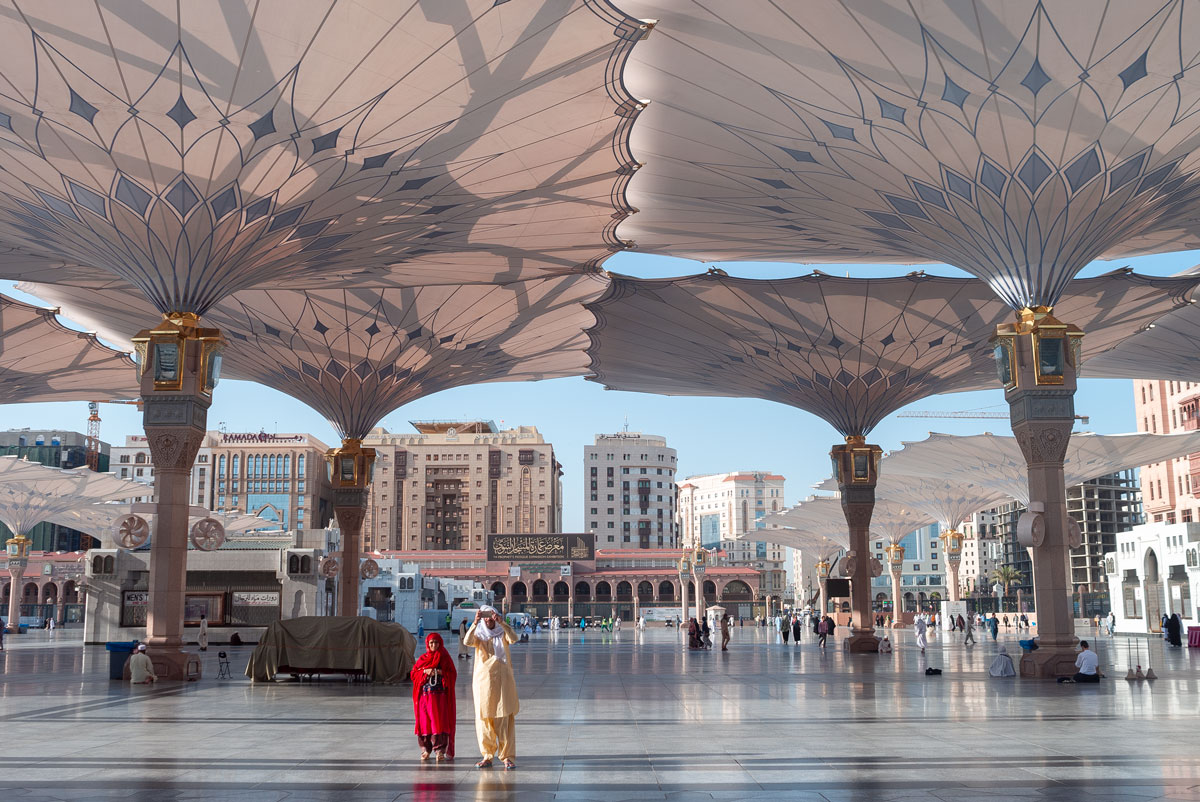
Secondly, each umbrella is equipped with a fan and a water sprayer. The fans help even more to knock down the heat, and refresh so much.
Thirdly, at night, the closed flower buds transform into lanterns! Powerful spotlights are installed on each stem, illuminating the entire square.
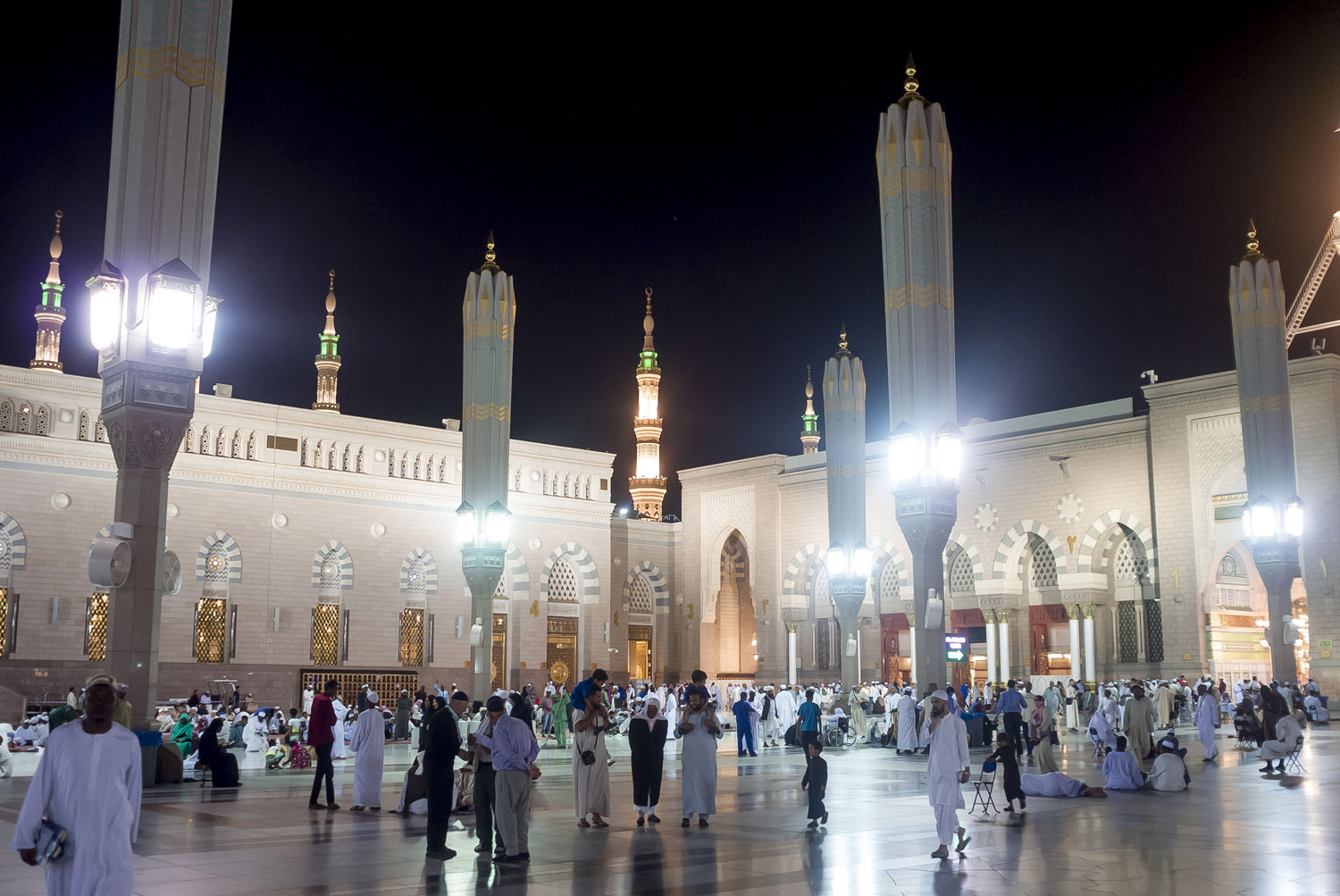
Finally, the tulip umbrellas serve as a powerful marketing move to attract people to Islam. Medina has made a breakthrough: people now come to the mosque not only for prayer. The square has become a cult place. People gather here to sit in the shade and discuss matters. There are always many people under the umbrellas.
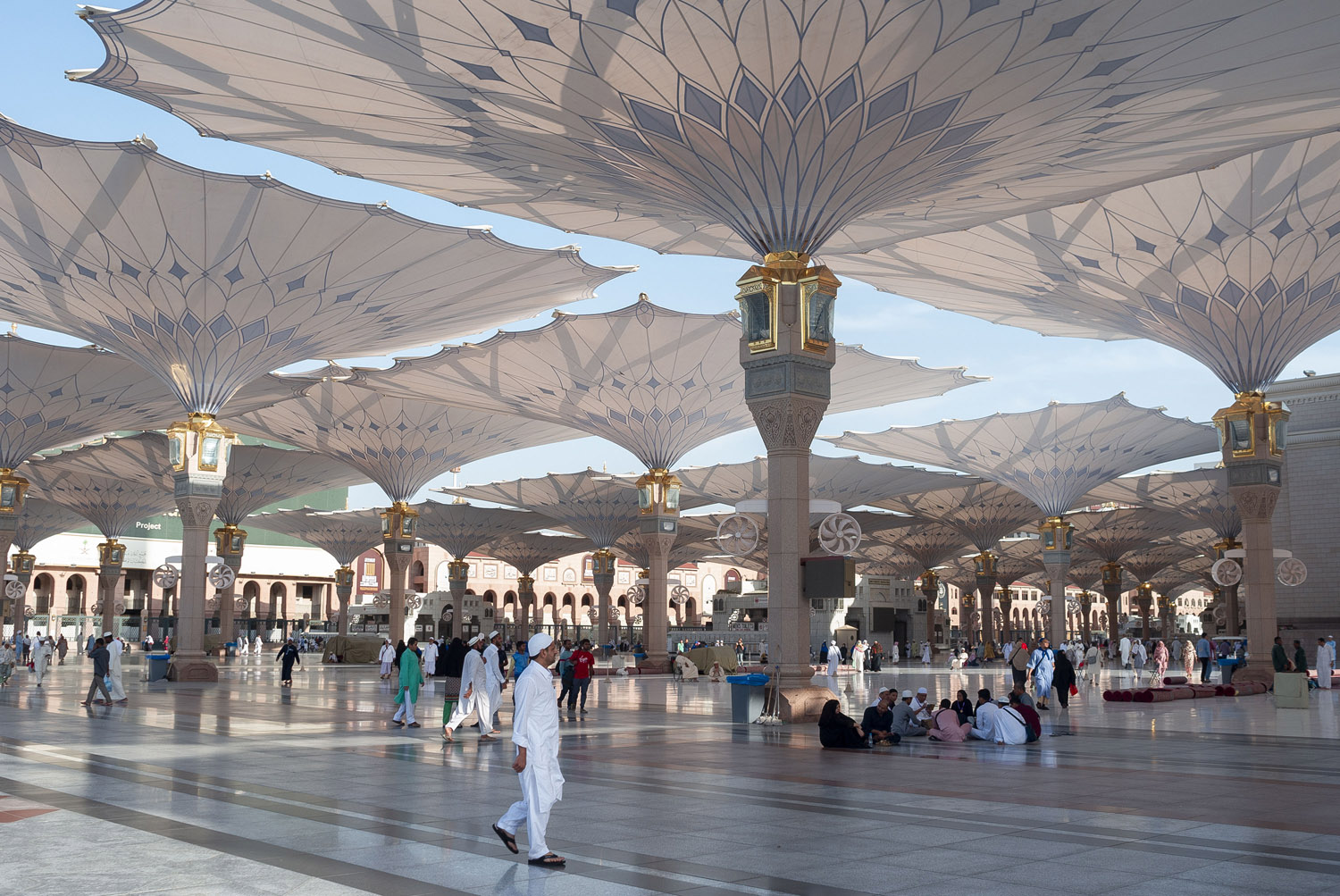
The square has also become a refuge for the poor. It is the only place where they can shelter from the unbearable heat. The deprived come to the umbrellas, sit down in the middle of the square, and freeze in prayer.
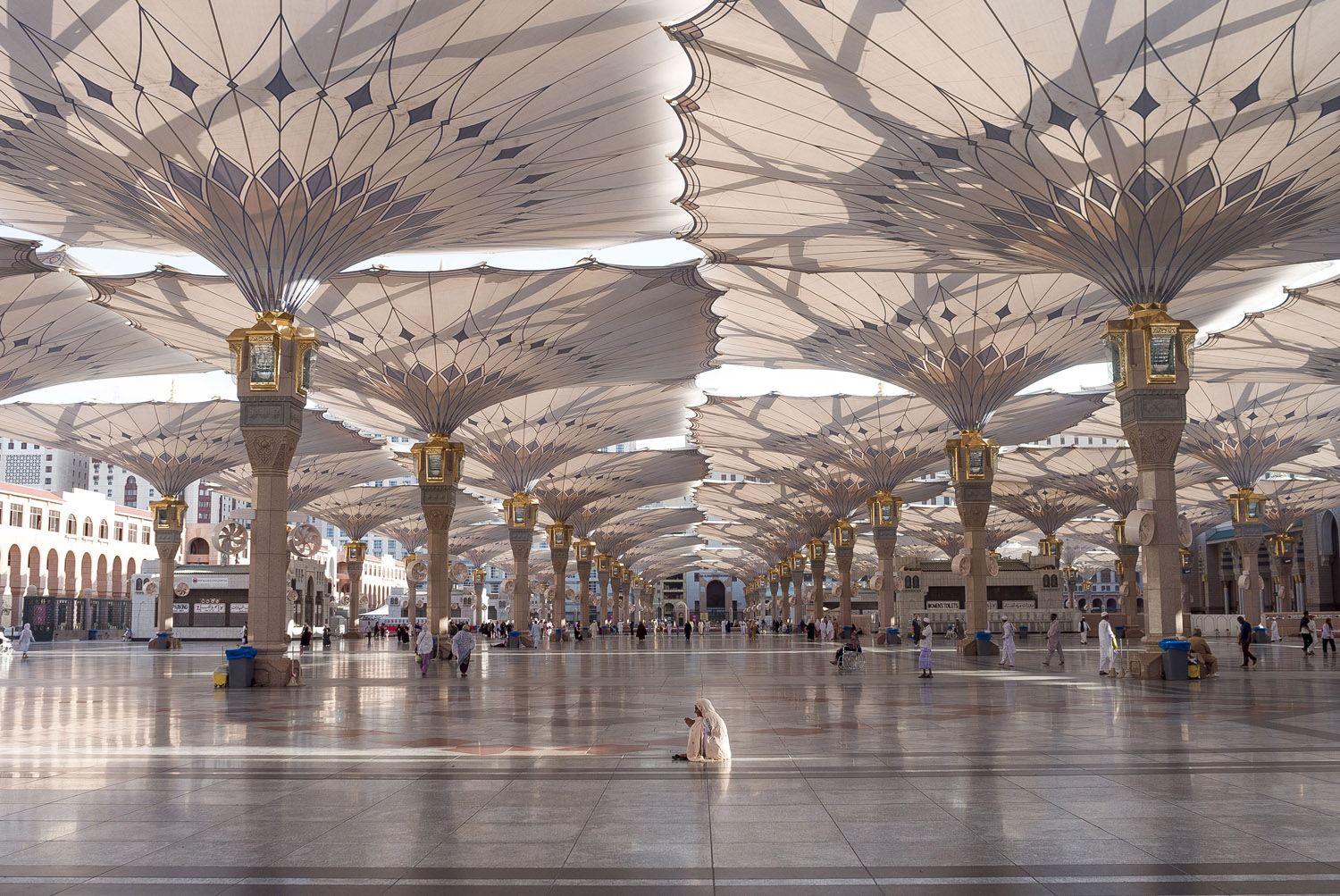
Tulips grow not only in front of the mosque but also inside it. The Prophet’s Mosque has a square shape with an open courtyard in the center. This cutout in the mosque is like a separate flowerbed in the midst of a field of flowers.
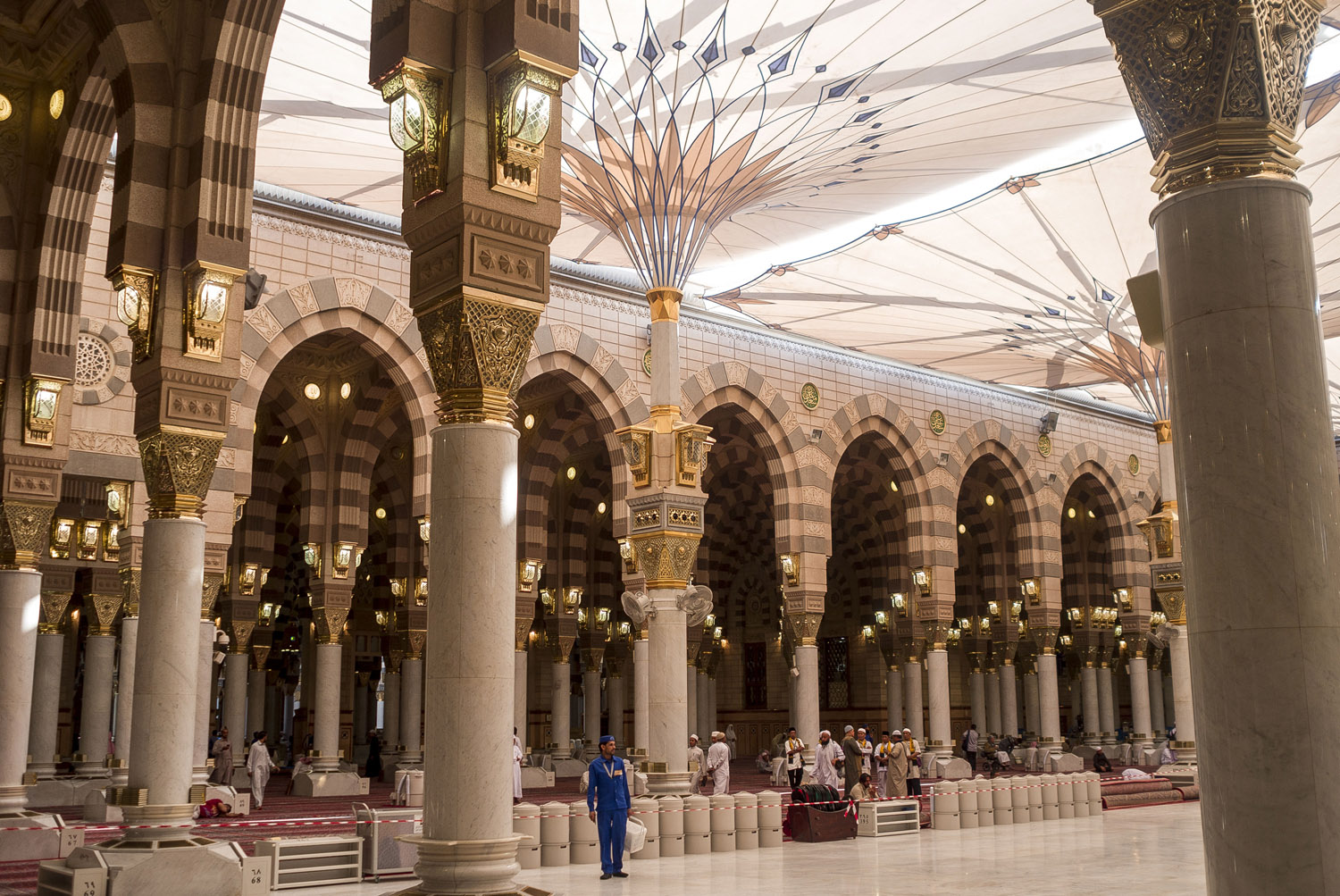
The fabric from which the umbrellas are made is so dense that a person can walk on it. The umbrellas are kept clean. To rinse them, a worker climbs on the flower like a bee and waters it with a hose.
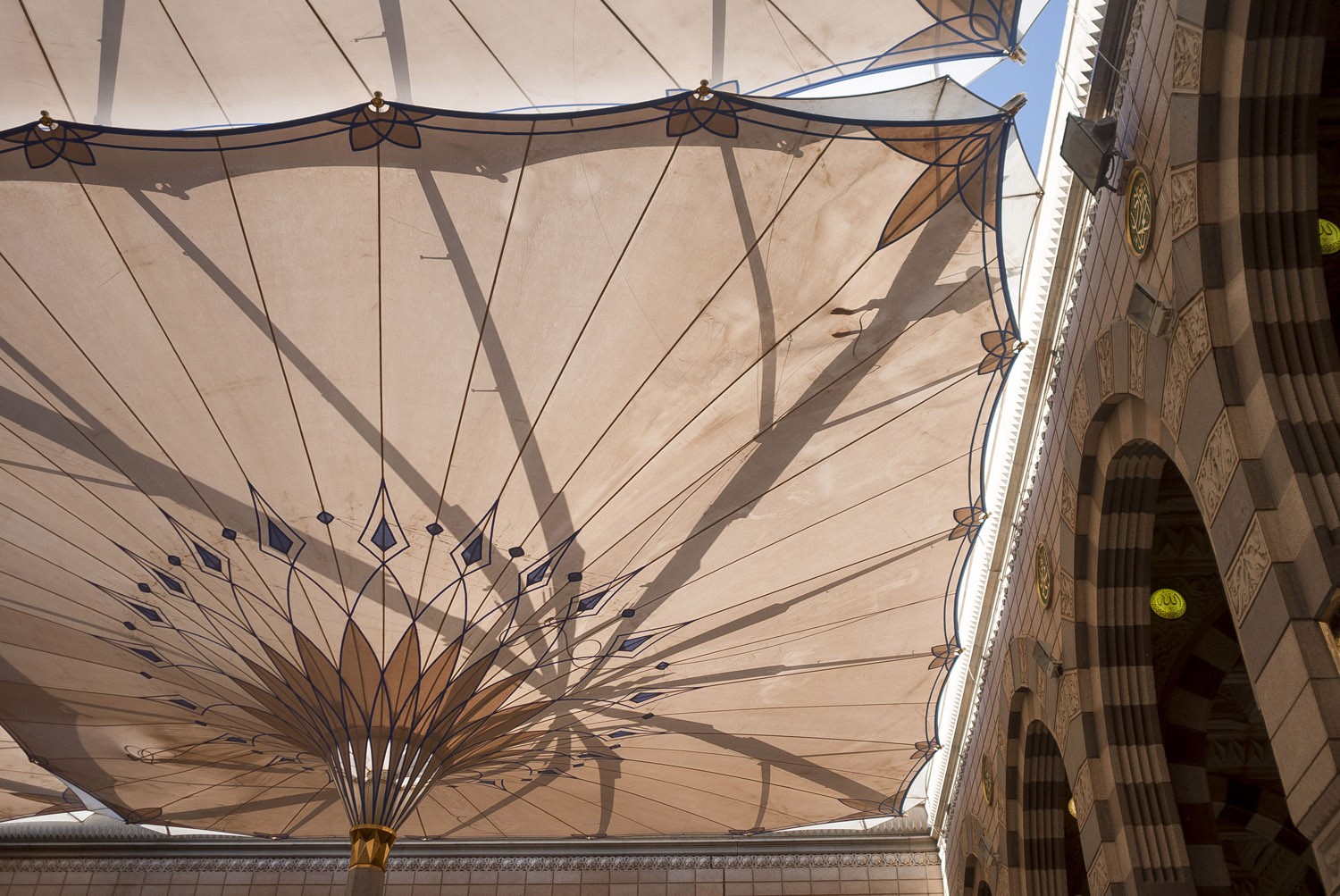
The mosque itself is a particular masterpiece.
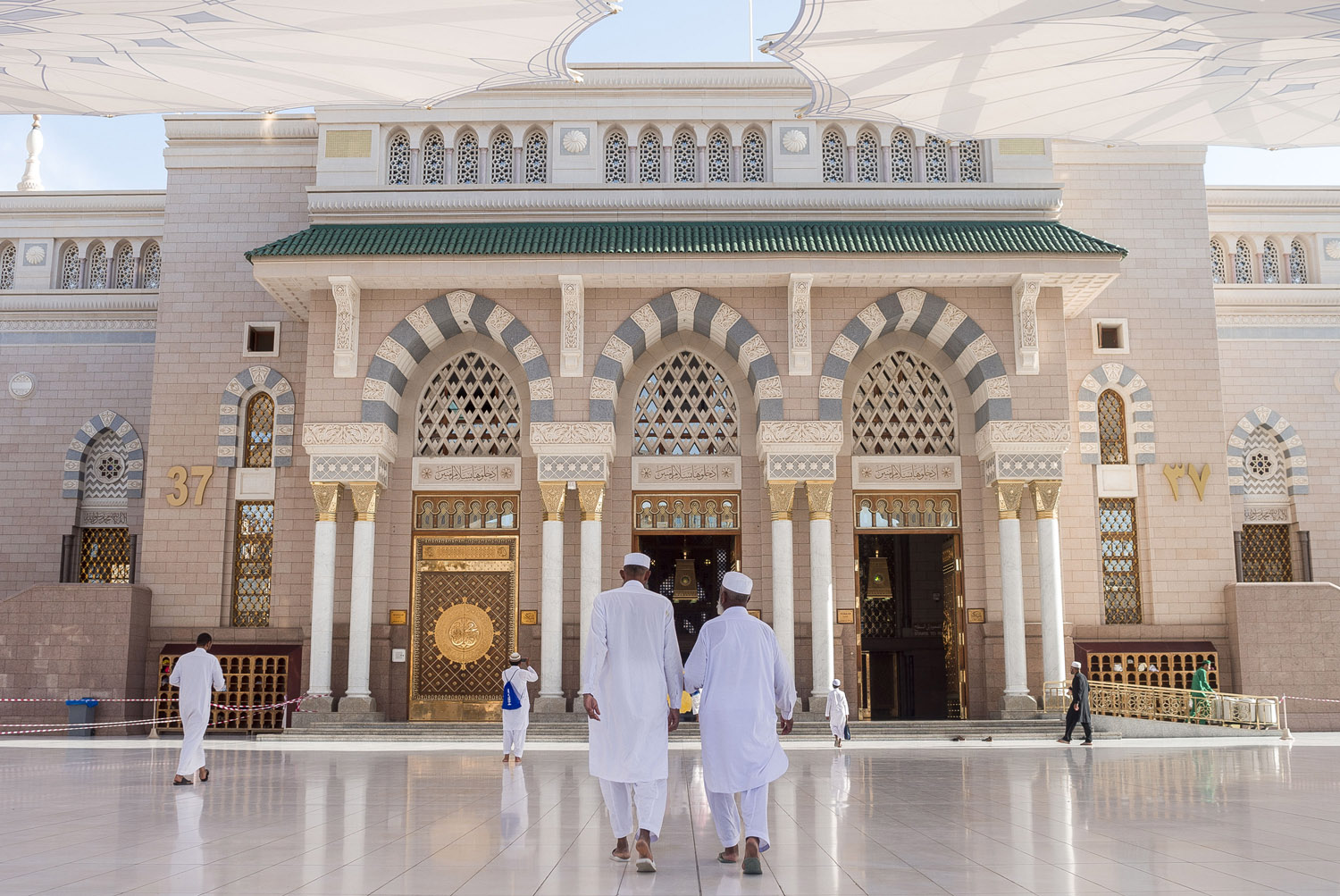
The mosque was first built on this site by Prophet Muhammad in 622. It was a small prayer room and the third mosque ever built in the world.
Then the mosque was many times extended, rebuilt, and expanded until it became the second largest in the world. The Prophet’s Mosque, together with its courtyard, can accommodate 600,000 people. During Hajj, it is superpacked to fit the whole million.
The mosque in its modern form began to be built by the Turks when Medina was under the rule of the Ottoman Empire. It was they who laid the arches with columns, and then the Saudis picked up the idea.
The mosque is always bustling with life.
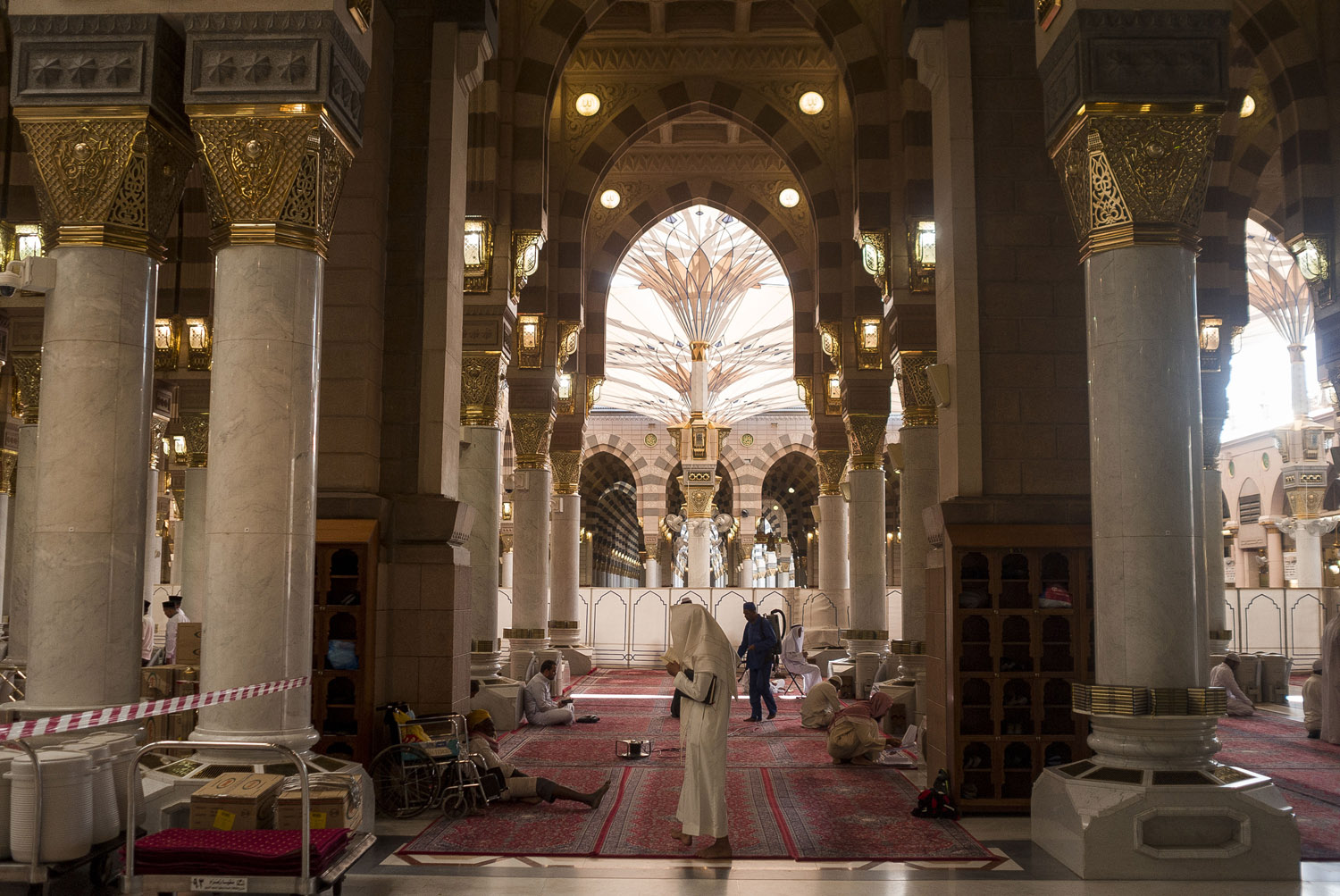
The mosque is the second home for a Muslim. Mosques are designed to create all conditions for people to come more often and stay longer.
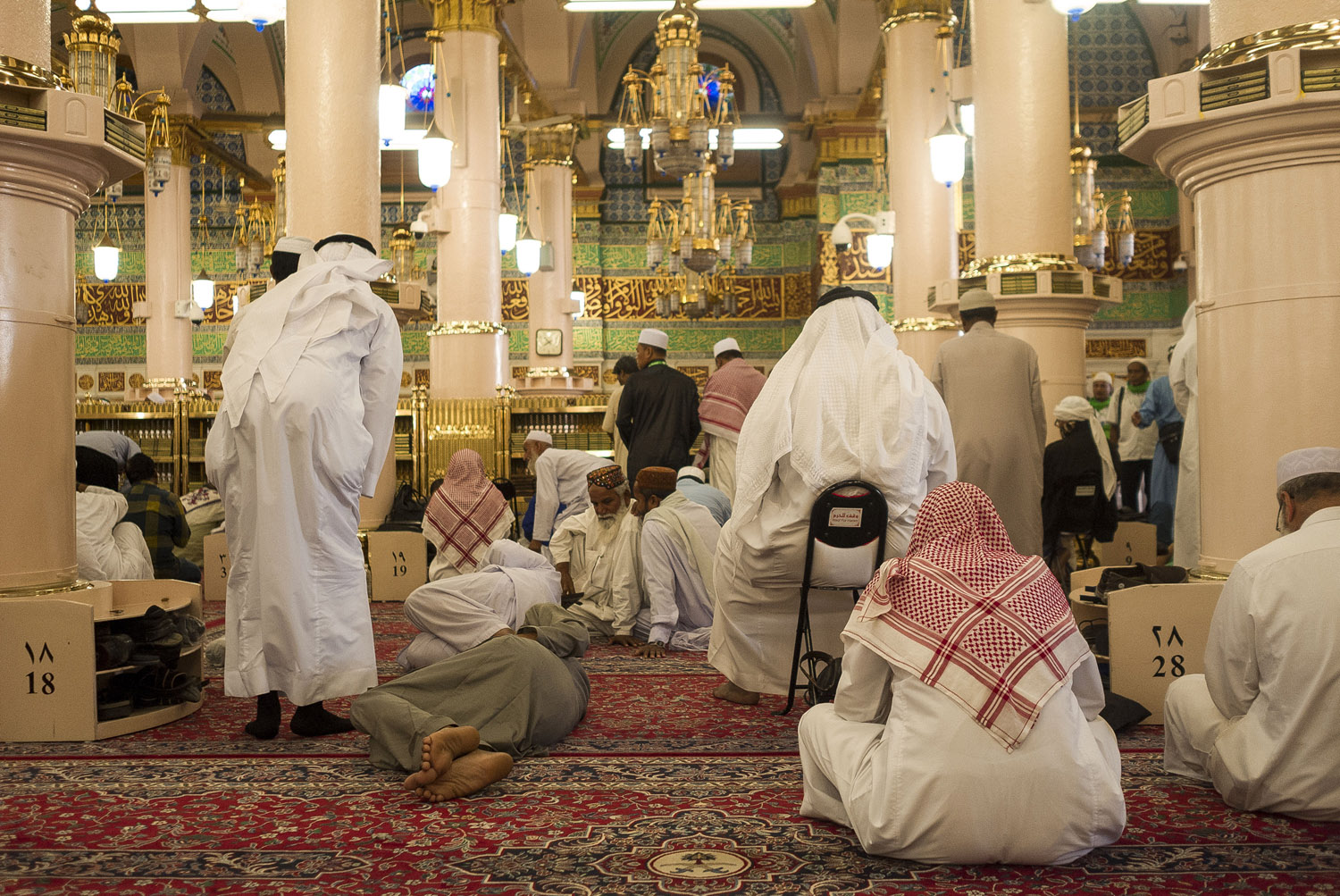
The Prophet’s Mosque hosts tanks filled with Zamzam water. It is an equivalent of holy water in Christianity. Muslims drink it in three sips while facing Mecca, and with each sip, they say: “Bismillah”.
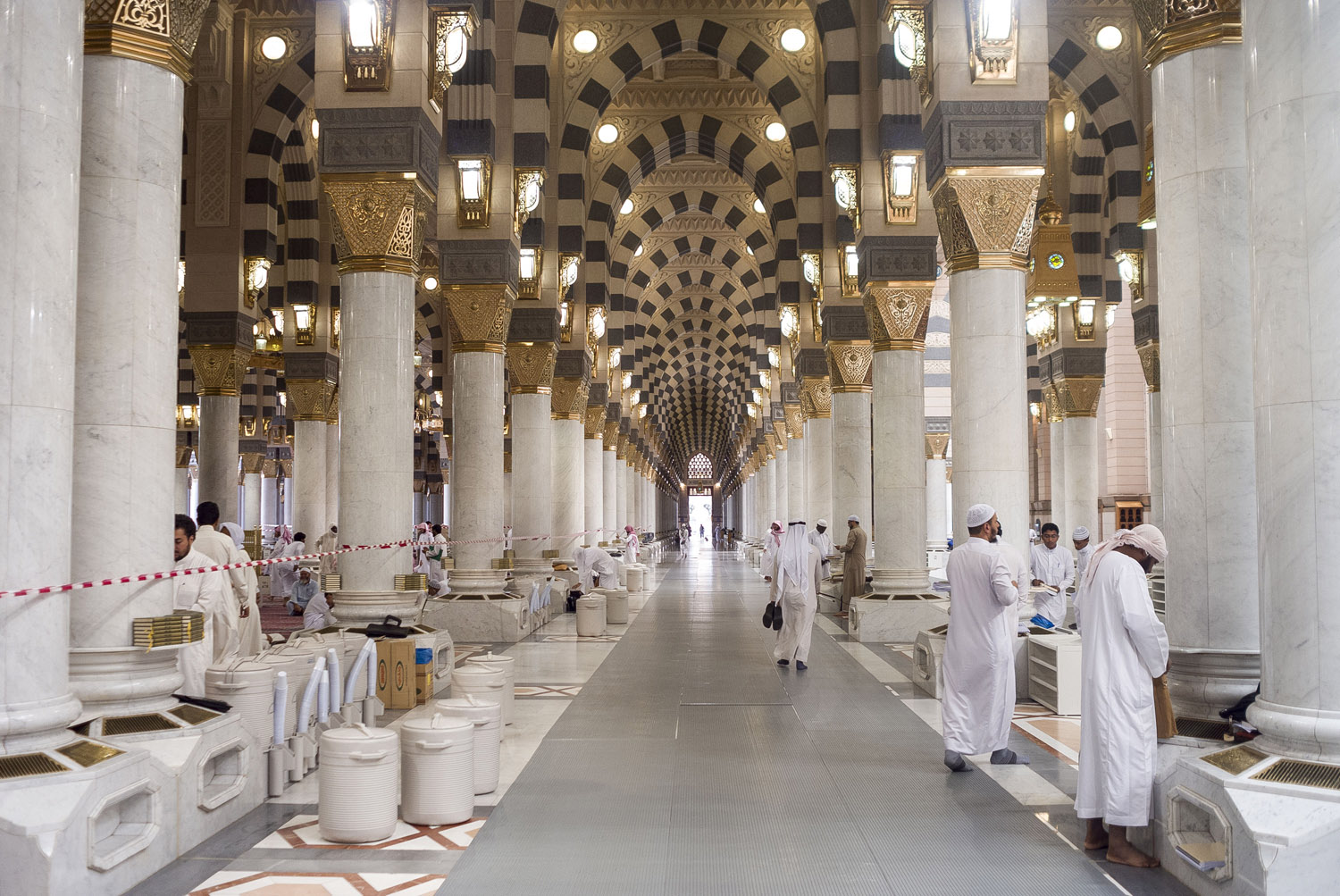
Carpets are spread everywhere in the mosque. They are supplied to the mosque by a company called “Abdullatif Company for Carpets”. The site in the domain carpets.com speaks itself about the company status.
For the mosques in Medina and Mecca, were total purchased 70,000 carpets measuring 325,000 meters in length and worth 12 million dollars.
Top-class carpets. Finger enters the pile by two phalanges.
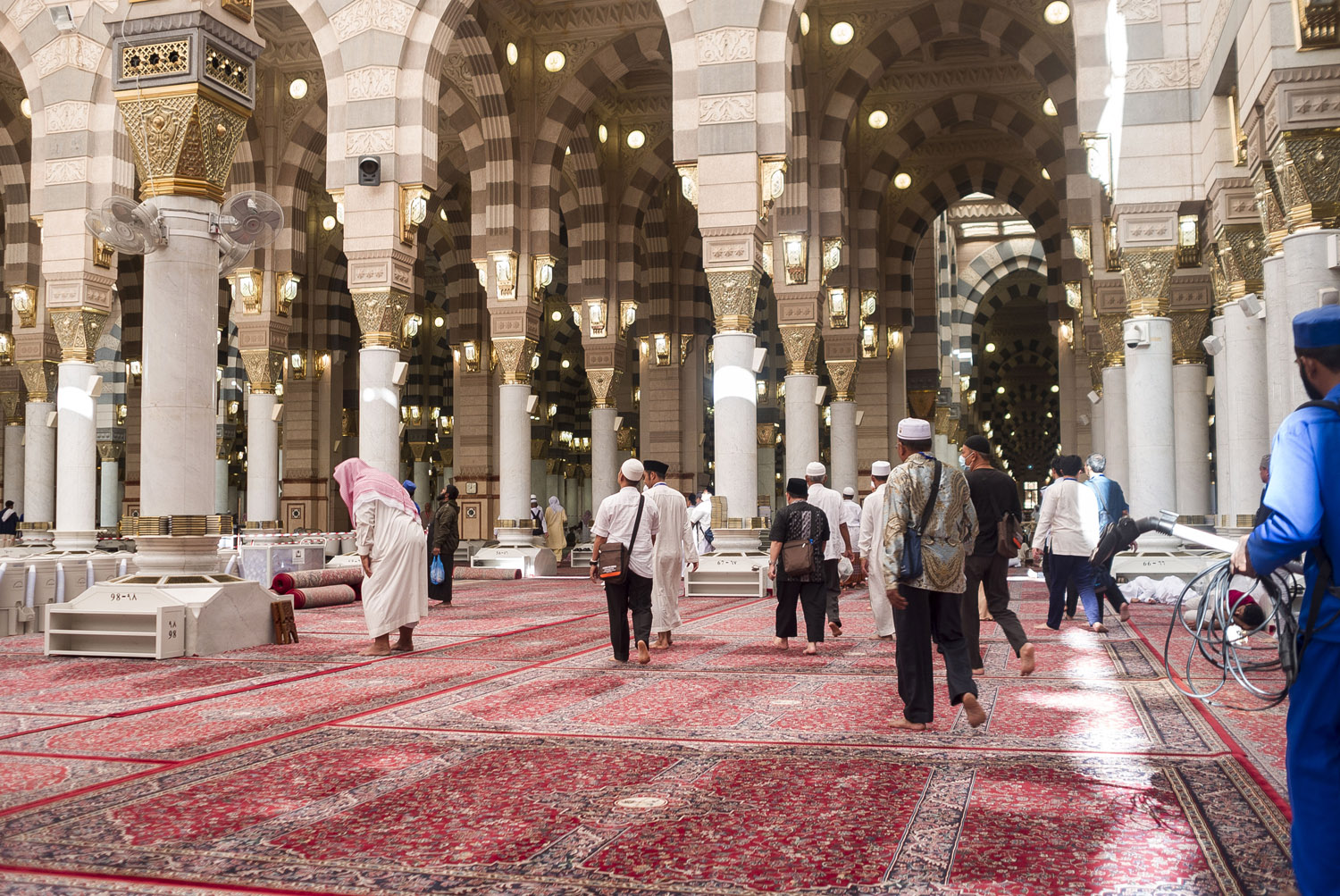
There is a big problem with carpets. Muslims are forbidden to pray in shoes. They can do it in socks, but most people pray barefoot. Of course, before every prayer, a Muslim must perform ablution: wash the hands up to the elbows, rinse the face, clean the heels of the feet, and wipe between the toes. However, ablution is often done hastily, and it is not easy to wash off old dirt.
Oh Allah, during my journey, I’ve seen all kinds of feet! White, black, brown, and yellow. With dirt on the heels, with hanging nail clippings, with warts, pimples, and sores. And all these feet walk on carpets on which a Muslim falls with his forehead and nose during prayer. What kind of infection won’t you catch?
Fortunately, Islam does not deny microbes. Therefore, carpets in large mosques are regularly cleaned. Throughout the day, they are vacuumed multiple times, regularly changed and washed with special cleaning tools.
What other amenities are there in the mosque? Water to drink. Carpets to pray and rest on. Remains finding something to read before bedtime.
Around each column are made special hollows where lie countless copies of the Quran. I couldn’t count how many there were in total. It seems, hundreds of thousands.
Muslims treat the Quran with great reverence. When taking the Quran from the shelf or placing it back, they kiss it. Reading the Quran is only allowed after performing ablution, which is done before prayer. And the most dreadful thing one can do is to place the Quran on the floor. Such an act could lead to serious consequences, such as a punch in the face.
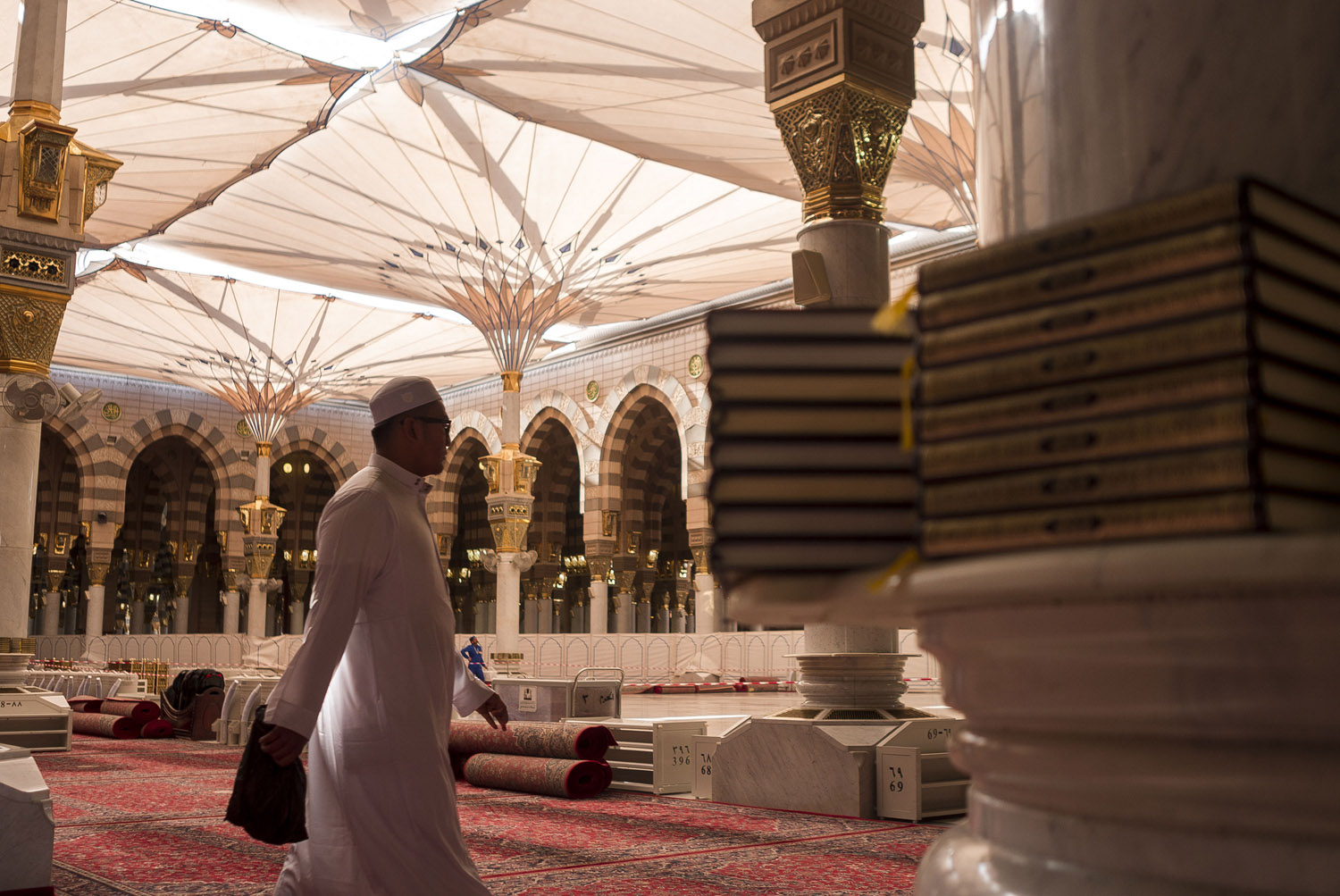
Paradise garden
The Prophet’s Mosque is called so because its initial version was built by the Prophet Muhammad himself. And he did it next to his house for the convenience of going to work of a preacher.
Muhammad passed away. He was buried in the house of his wife Aisha, which was also located nearby. Later, the mosque was expanded, and the tomb and house of Muhammad ended up within the mosque’s premises. Almost 600 years later, a wooden dome was built over the tomb.
On old paintings, one can still find the house of Muhammad and the dome over his tomb.
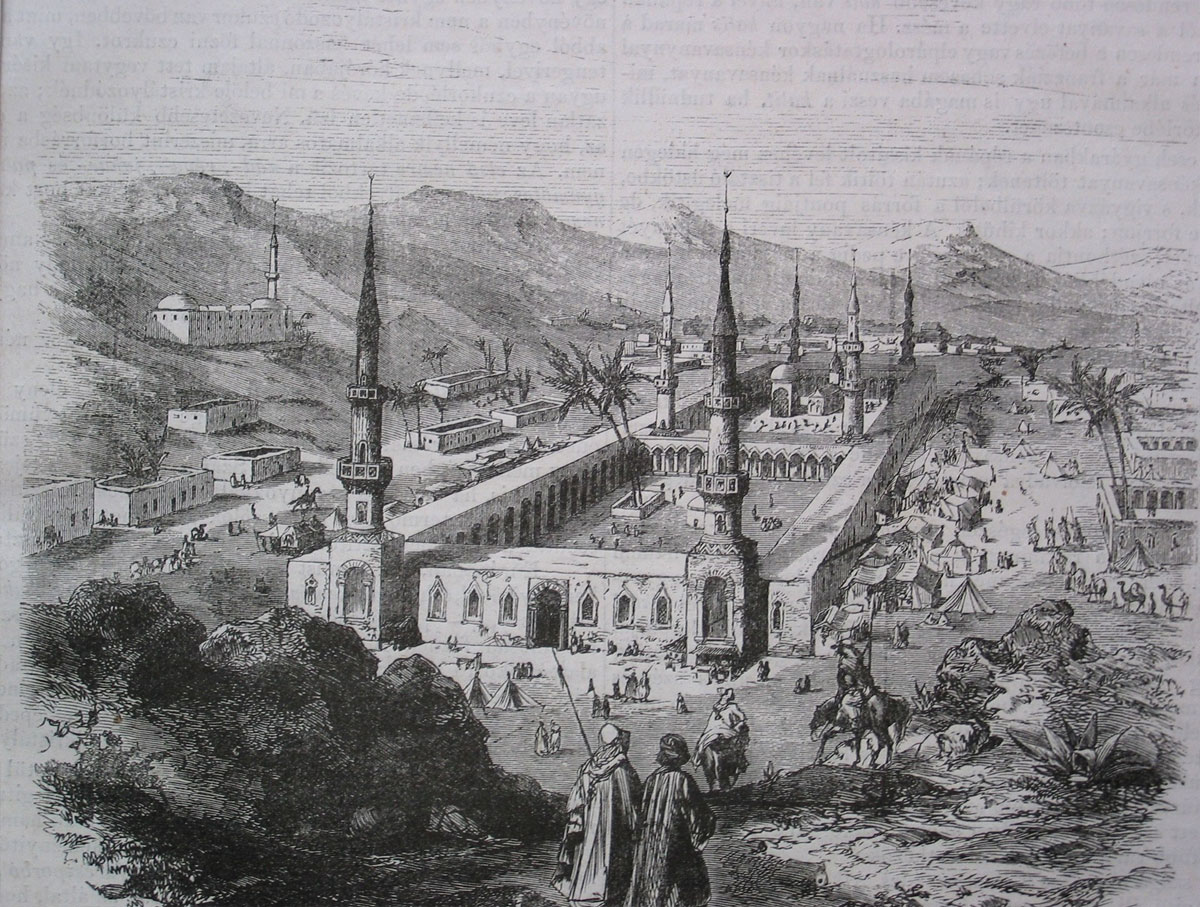
During the time of the Ottoman Empire, the mosque underwent significant reconstruction. The dome was replaced with a stone one and painted in green color. Since then, it has been known as the Green Dome.
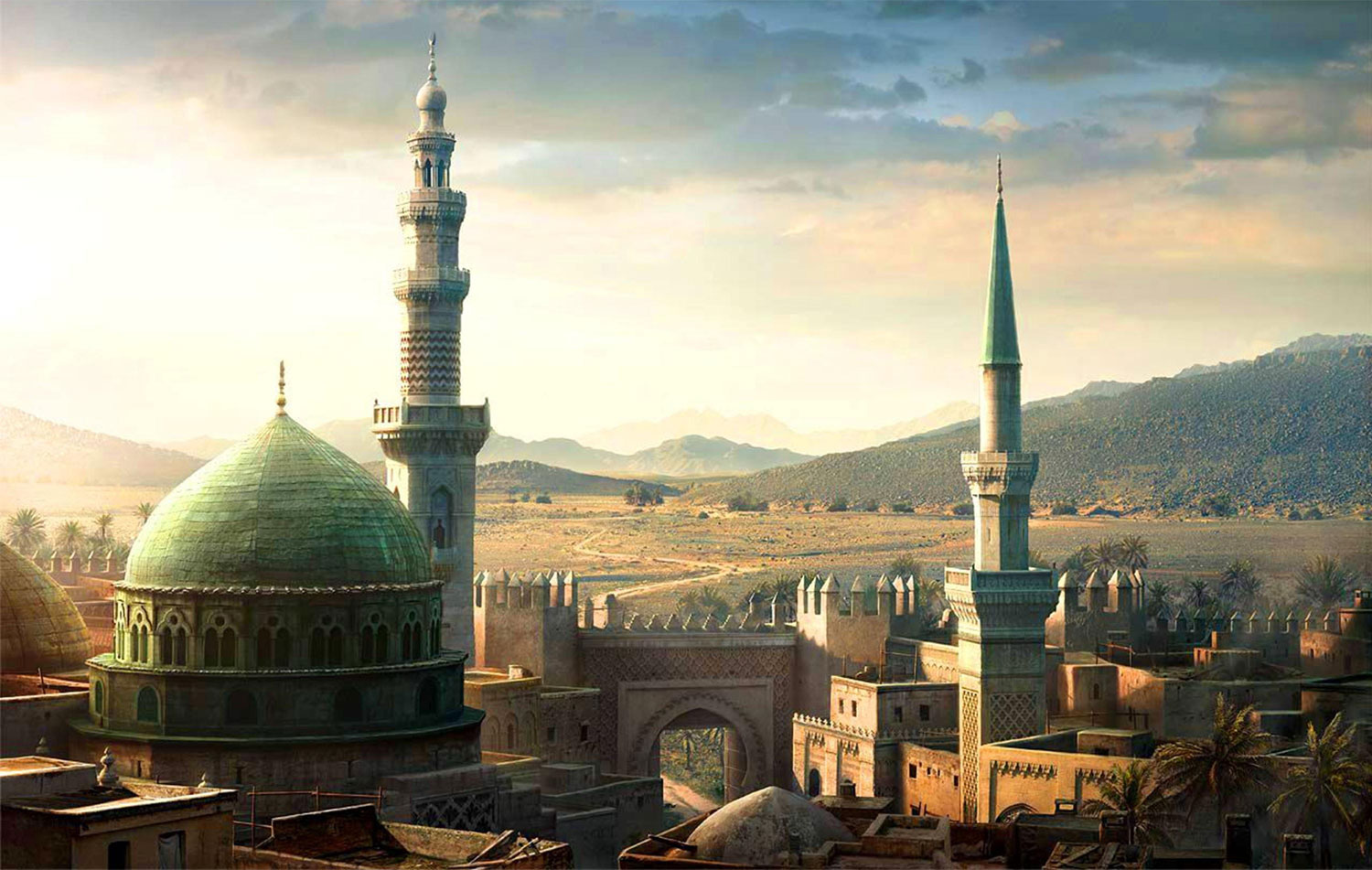
Then in the 20th century, Arabia was captured by the Saudi dynasty, which has been ruling the country to this day. The Saudis rebuilt the mosque in such a way that it absorbed both the dome and the house of Muhammad, which essentially ceased to exist.
The only thing left from ancient times is the green dome protruding from the roof. Inside the mosque and beneath the dome, there is an interesting place. Here, the red carpets suddenly end and the green ones begin. The passage rests against a long queue.
This place is called the Paradise Garden. The Paradise Garden is the very place in the mosque where Muhammad’s house once stood. His tomb is also located here.
A long row of columns, separated by an iron fence, leads to the Paradise Garden. This enclosure for people is divided into three sections.
The sections are opened one by one. At start, they open the first section. It quickly fills up with a crowd of pilgrims, and the section is closed. The crowd is held for some time, after which the second section is opened. Pilgrims move to the second section, while the next batch of people takes their place in the now vacant first section.
In each section, people are held for 20 minutes. To reach the Paradise Garden, one will have to stand for a whole hour in the sweaty crowd where it’s impossible to change position.
Well, this is a typical attitude of the Saudis. Pilgrims are cattle to them.
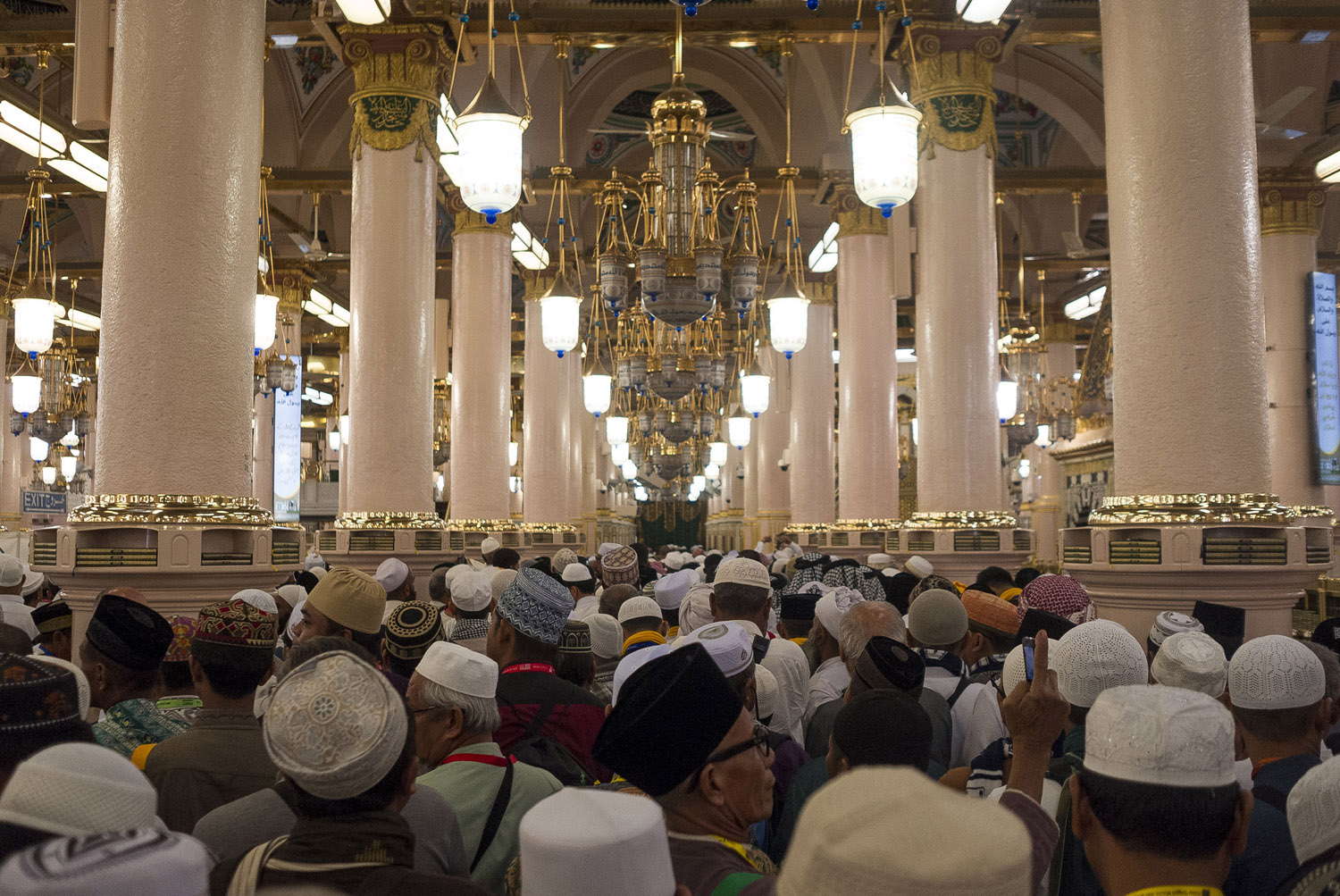
It should be noted that Islam is a tricky religion.
For example, Islam has a system of achievements. Just like in computer games. Let’s say, one prayer in the Prophet’s Mosque counts for a thousand ordinary prayers. Or: those who reads the Friday prayer in the mosque is rewarded as for a year of good deeds.
By constantly performing such actions, one can earn points that in the heavens can be exchanged for various bonuses.

Muslims believe that prayer in the Paradise Garden brings a special harmony and peace. It is said that those who pray in the Paradise Garden on Earth will enter the Paradise Garden in Heaven as well. That’s why huge crowds are breaking here.
During prayer, Muslims bow to the ground, touching the floor with their foreheads and noses. In the Paradise Garden, there is so little space that it’s even difficult to bend. As a result, people contort themselves threefold. They hit their foreheads directly at their knees because it’s impossible to stretch any further.
The rows of worshippers stand so tightly that during the bow, one’s head ends up hitting someone’s heels... A pilgrim tries to make his way to the exit. Someone bends down and hits him with head. He takes a step to maintain balance, but steps on someone’s palm. Then hits someone’s back with his knee; now stumbles over someone’s feet...
Oh, feets. While carpets are regularly cleaned throughout the mosque, in the Paradise Garden they go unwashed for weeks. The carpets turn into dirty rugs soaked with dust, sweat, flakes of peeling skin, clippings of nails, pieces of warts, and hair.
After praying in the Paradise Garden, pilgrims exit into a narrow corridor. Now they have a few seconds to pass by Muhammad’s tomb and send him a warm sporty salam!
Meanwhile, the policemen are punching people in side with batons and pull them by the scruff of the neck so they hurry up.
Sly Kurd
The humiliation of pilgrims is an intentional policy of Saudi Arabia.
The Saudis adhere to Wahhabism, a radical version of Islam. Wahhabis interpret the Quran quite literally and elevate religion to a totalitarian absolute. For example, the commandment “do not create idols” they understand in such a way that the Prophet Muhammad becomes an idol himself.
The Saudis came to power in the early 20th century. And the first thing they did was destroy the old cemetery in Medina.
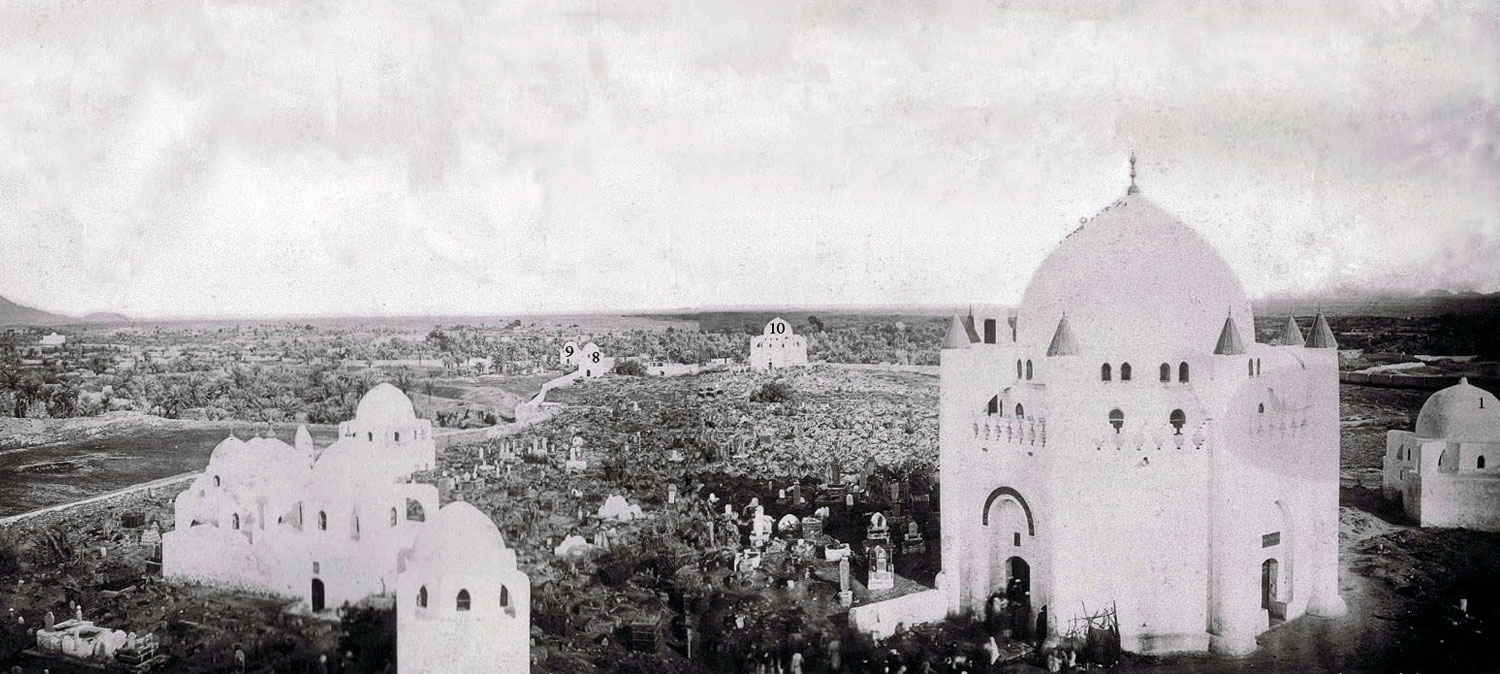
The Saudis leveled thousands of graves to the ground. They scatter the graves of Muhammad’s father and mother, his wives, daughters, and sons. Not content with that, the Saudis attacked the graves of Muhammad’s uncles and aunts, followed by his cousins, in-laws, and other relatives. When the necrophilia lovers developed a taste for it, they dug up the entire cemetery because all 7,000 individuals were either friends of Muhammad or had shaken his hand at some point.
The atrocities did not started from nothing. Indeed, Islam has prohibited performing rituals at graves since the time of Muhammad. All Islamic schools forbid constructing domes and mosques over graves. The permitted height of a tombstone is only 22.5 centimeters. Wahhabis do not even allow signing gravestones.
So where did the cemetery with domes come from then? Before the emergence of Wahhabism and the Saudis, Islam was slowly getting rid of medieval cruelty, embracing philosophical and rational theories. However, the Saudis returned the religion to its origins by declaring all accumulated humanism as sinful innovations.
Therefore, now, when the cemetery has been brought to its “primordial Islamic” state, it looks like a piece of desert prepared for development, with tombstone stalks sticking out of the ground. Pilgrims are driven like cattle through the barren cemetery along narrow paths, forbidding them to linger or deviate. A group of three Muslims decided to approach one grave. They began to read prayers quickly. Policemen immediately rushed and grabbed them by the elbows.
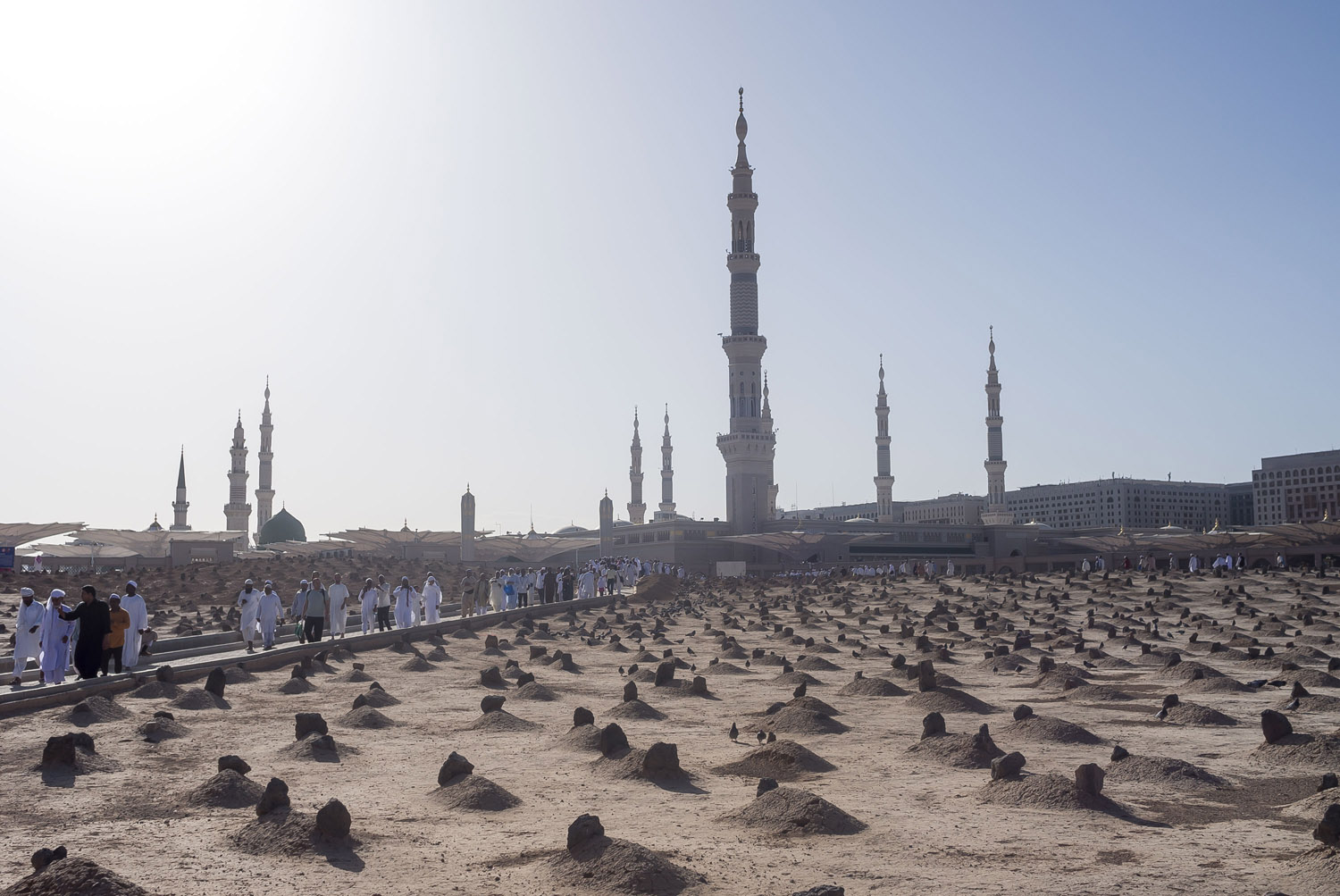
Perhaps, they will not leave the cemetery in peace and completely level it to the ground, replacing by a skyscraper.
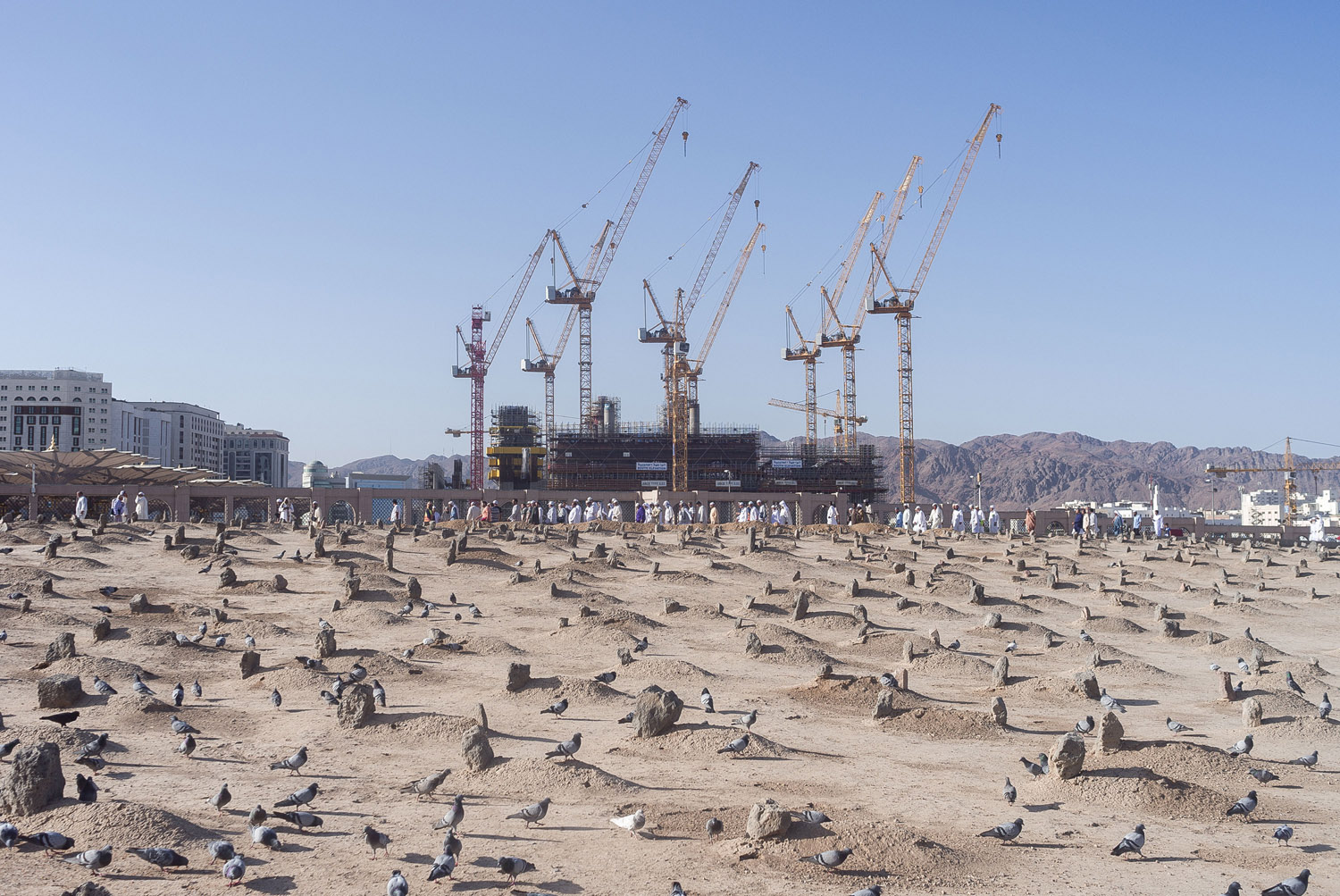
That’s why the Paradise Garden resembles a cattle pen. The Prophet Muhammad himself is buried in this place. For Wahhabis, this place is doubly cursed. Firstly, they consider prayers to Muhammad as idol worship. Secondly, a dome has been constructed over the Prophet’s grave and a mosque has been built. So the carpets in the Paradise Garden are intentionally left dirty, the overcrowding is deliberate, and the police consciously punch pilgrims with batons.
The green dome over Muhammad’s grave is the only historical monument that has not been reached by destroyers. They wanted to break it twice. The first time they lacked the strength, and the second time they feared the wrath of the crowd. However, the Saudis are preparing for the third attempt. Several years ago, they announced their intention to remove the Prophet’s grave from the mosque and bury him in a common cemetery, placing an unmarked stone stump.
Until that happens, the green dome remains a popular meeting place. Opposite it, believers and pilgrims from all over the world gather together and read special short prayers addressed to Muhammad.
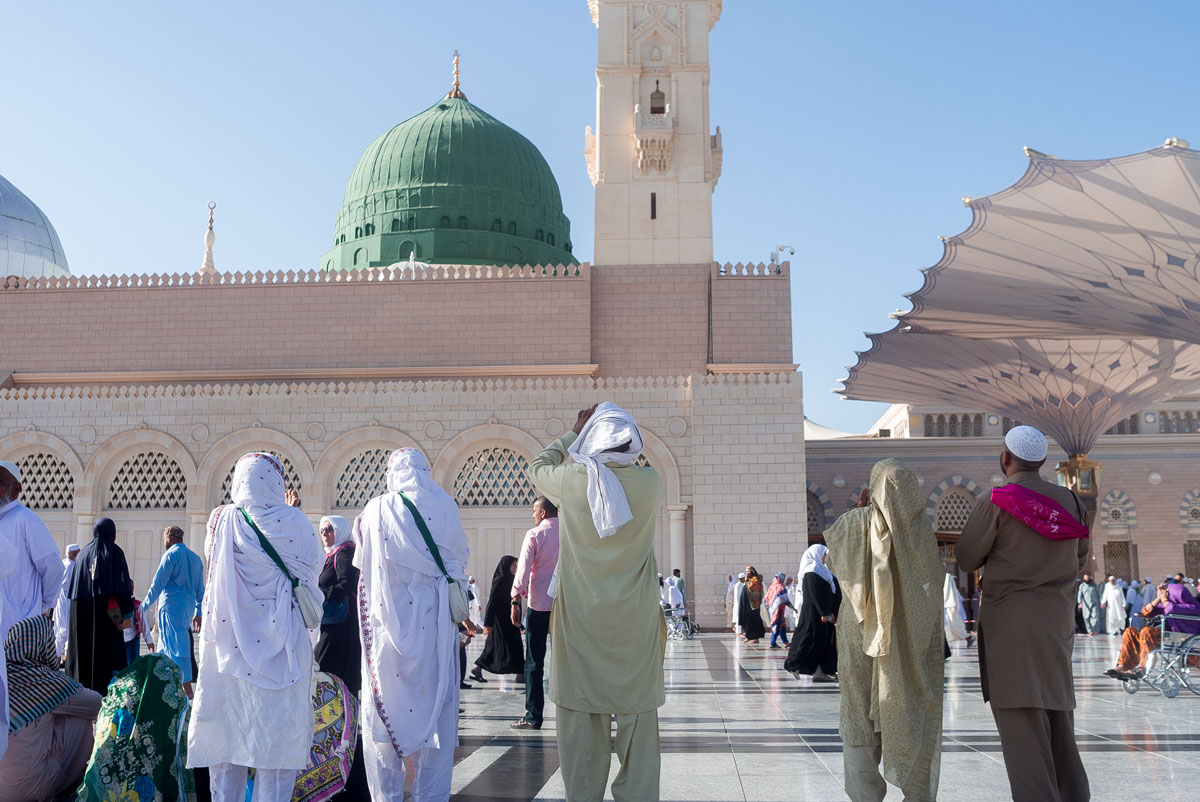
And there I was, too, sitting in front of the dome, when a pilgrim started talking to me, clearly from somewhere like Iraq.
“Hey, salaam alaikum.”
“Wa alaikum salaam.”
“Muslim?”
“Muslim.”
“Kurdistan! You?”
“Rusiya!”
“Oh, Rusiya!”
The Kurd spoke only Arabic. He didn’t know a word in any other language. As for me, I knew only a few phrases in Arabic. The Kurd and I quickly realized that it was better to talk about simple topics that could be explained through gestures.
“Brother, why did you accept Islam?” I understood his question from the word “Islam” and his questioning intonation.
“What are you saying?” I shrugged, “I don’t understand!”
The Kurd repeated his question several times. I pretended not to understand him, although I simply didn’t feel like answering. Besides, how would he have understood my response? It’s a whole story. But the sly Kurd wanted to dig deeper into why a European suddenly decided to become a Muslim.
Due to his persistence, I started getting worried. I didn’t have a clear and concise answer. I tried to get up and leave, but the Kurd pulled me back by my shirt and sat me back down.
Suddenly, the Kurd hailed the crowd. By his intonation and the word “englizee,” I understood him:
“Hey, does anyone here speak English?”
“Yes, I understand,” responded a fat bearded man in a long white Arabian shirt.
“Translate for him: ‘Why did you accept Islam’?”
“Brother, he ask, why you are Islam?” the translator explained in broken English.
Upon hearing the conversation, several more people gathered around us. They all surrounded me, and the Kurd explained to them that there’s a European sitting in the center of Medina, and he, the Kurd, is trying to find out how the white-skin came to Islam.
Cold sweat. I was prepared to tell my feeble story in Russian to someone from Tatarstan, but I was absolutely not ready to narrate a whole story in English to five Muslims who surrounded me from all sides.
“Aaah! How I accepted Islam! Well, you see, I kind of always believed in God. I knew there was this dude, Moses. Then Jesus came. My mom told me about this. And then I grew up and learned that there was also Mohammed...”
“Sallallahu alayhi wa sallam,” chimed in unison all five, upon hearing the name of the Prophet.
“Yes, exactly, may Allah bless and greet him,” I repeated. “Well, in general, I learned that there was also Mohammed. And I thought that he was no worse than Jesus. It has to be I must believe in him too. Something like that,” I wiped a stream of sweat trickling down my forehead.
The translator explained my words to the Kurd. But this dimwit was displeased with my answer:
“Brother, I’m not asking that. I’m asking why is Islam better than Christianity? Why did you change your faith?”
“Uhh... Well, brother. Min kalbi! From my heart!” How else can I explain it to you, you son of a bitch? You don’t even know English.
The Kurd was determined not to give up on me. Muslims from all over the world come for pilgrimage. Medina and Mecca are melting pots of Islam. Here, you can encounter Chechens, Tatars, Syrians, Lebanese, Egyptians, Turks. But the scariest thing is to encounter Kurds.
Kurds are an eternally persecuted people without a state. Hundreds of thousands of Kurds perished at the hands of Saddam, while tens of thousands are oppressed by Turkey and Syria. In such circumstances, Kurds have become cunning and insightful. They can quickly expose anyone’s true intentions.
So this Kurd saw through me at first glance. I was saved by a cleaning machine that drove right through the crowd. It’s another amusement of the Saudis — dispersing those sitting in front of the dome.
I took the opportunity and left. But could have simply said that I was Tatar!
Beyond the mosque
Beyond the mosque, Medina is nothing.
There are a couple of landmarks. One of them is the Abu Bakr Mosque. The Reader is unlikely has heard this name. He was a friend and companion of Muhammad, who after his death conquered a large part of the Arab Caliphate. It’s unclear why the Saudis didn’t blow up this mosque along with the cemetery. Apparently, he was a good warrior.
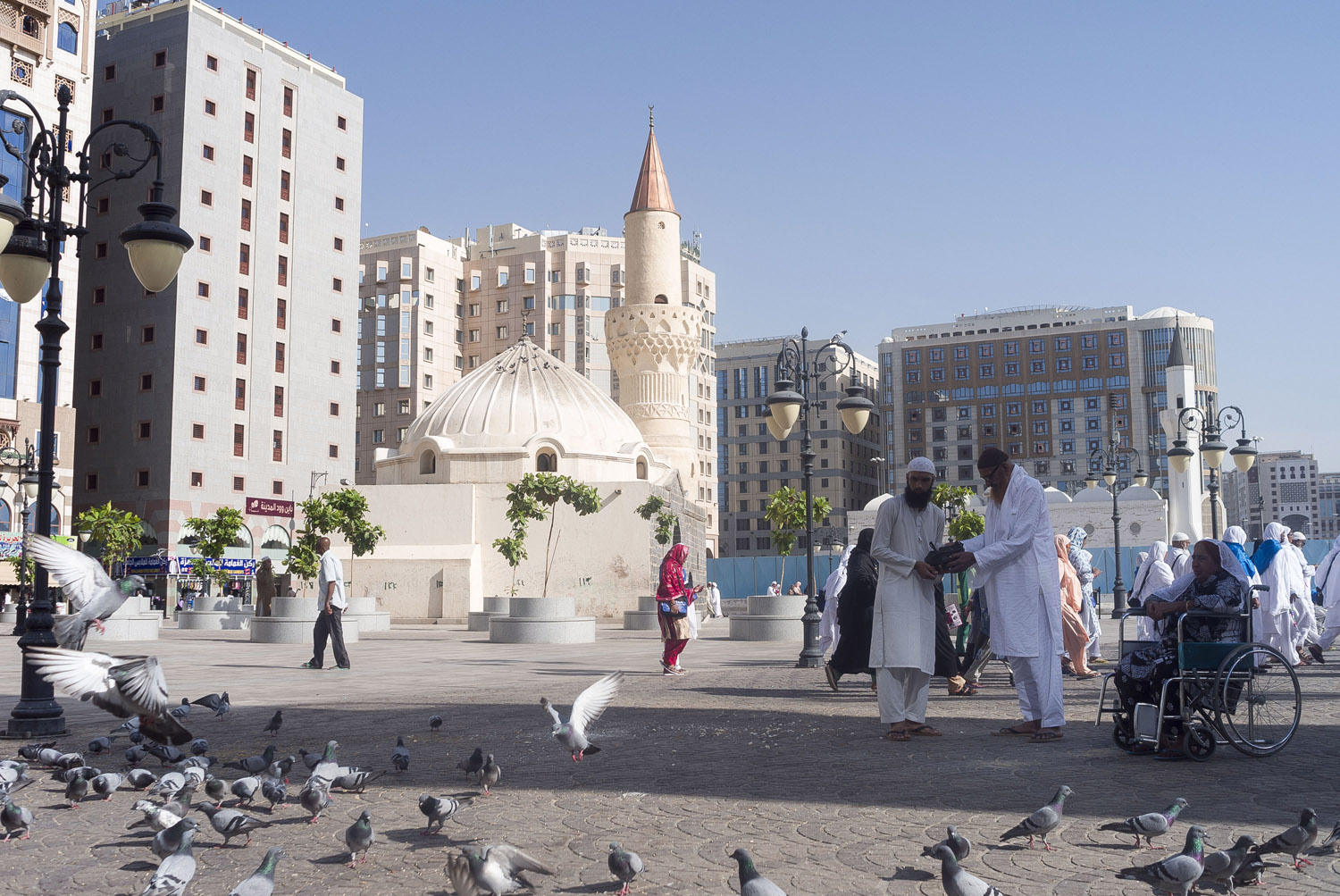
Muslims approaching the mosque stare through the window — it seems that behind the glass, one can see the footprints of Abu Bakr or something like this.
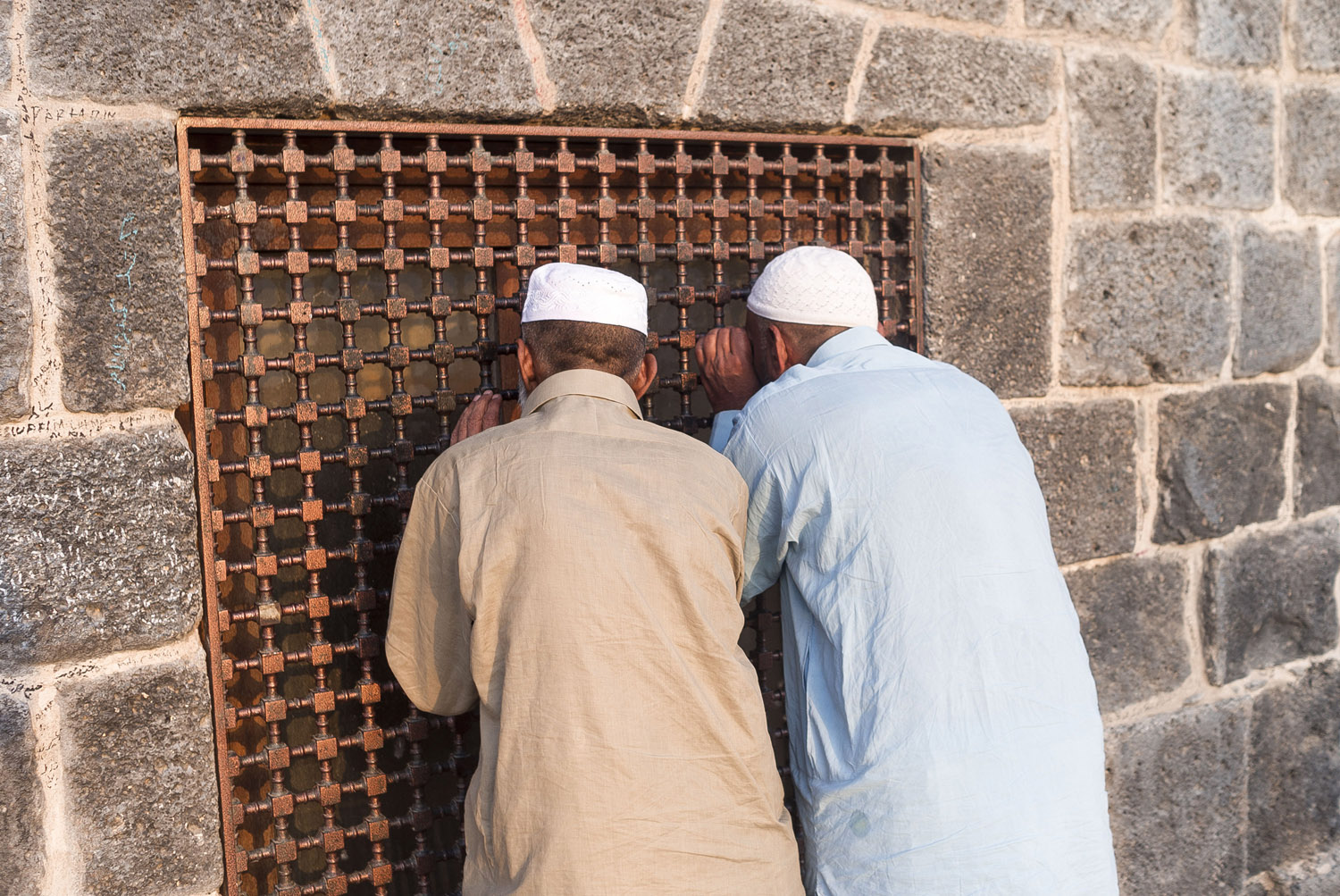
Not far from his mosque, grow few feeble palm trees, surrounded by a modest lawn. There is no other greenery in Medina. Palm orchards grow somewhere outside the city, from which dates of all varieties are harvested by kilograms and sold. As for Medina, it is an unpleasant city of stone and asphalt.
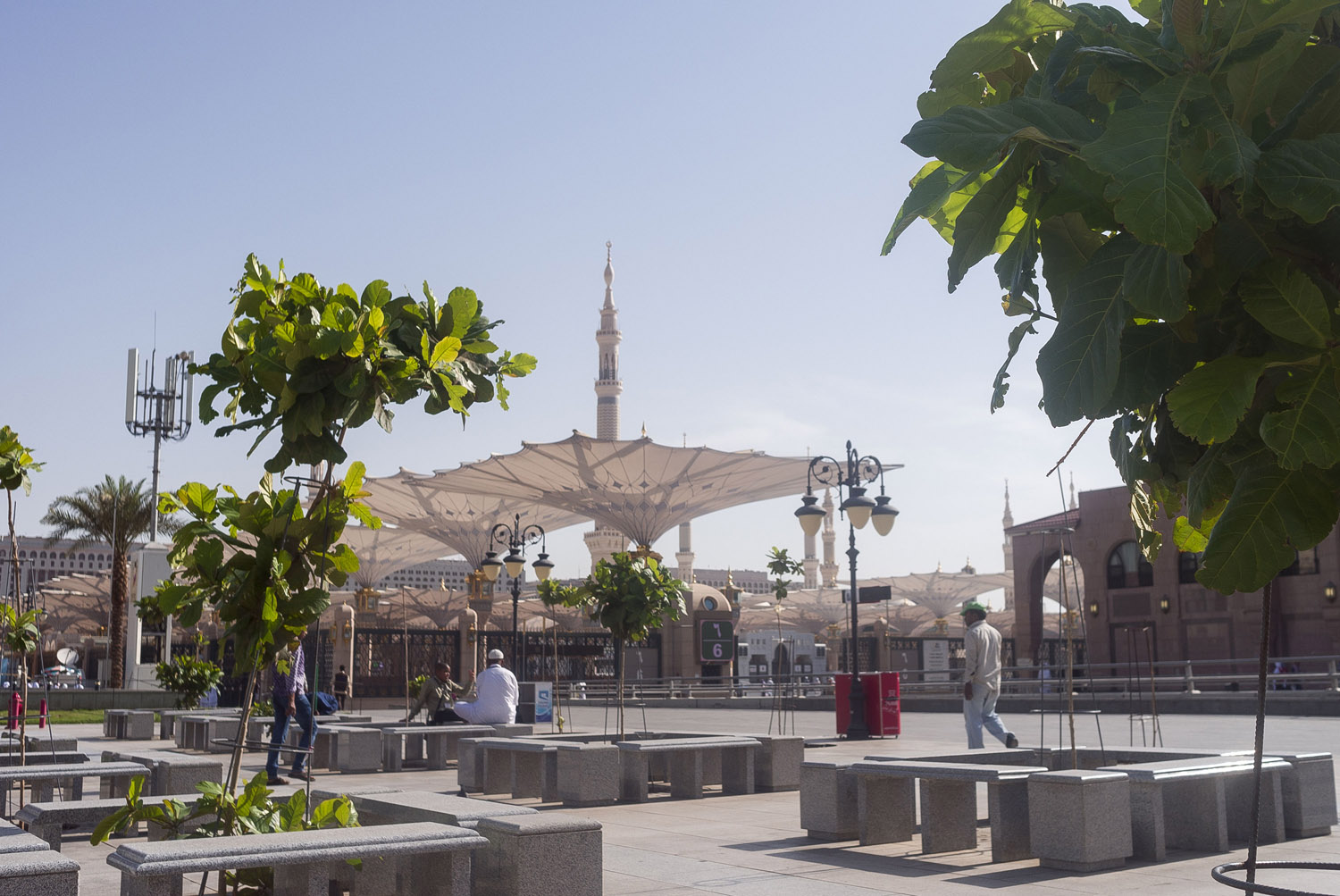
There is nothing else to see in Medina. This city is the Las Vegas of the Islamic world. It is not a sin city, but it’s equally plastic and lifeless. In the center stands a huge mosque. Straight streets radiate from it.
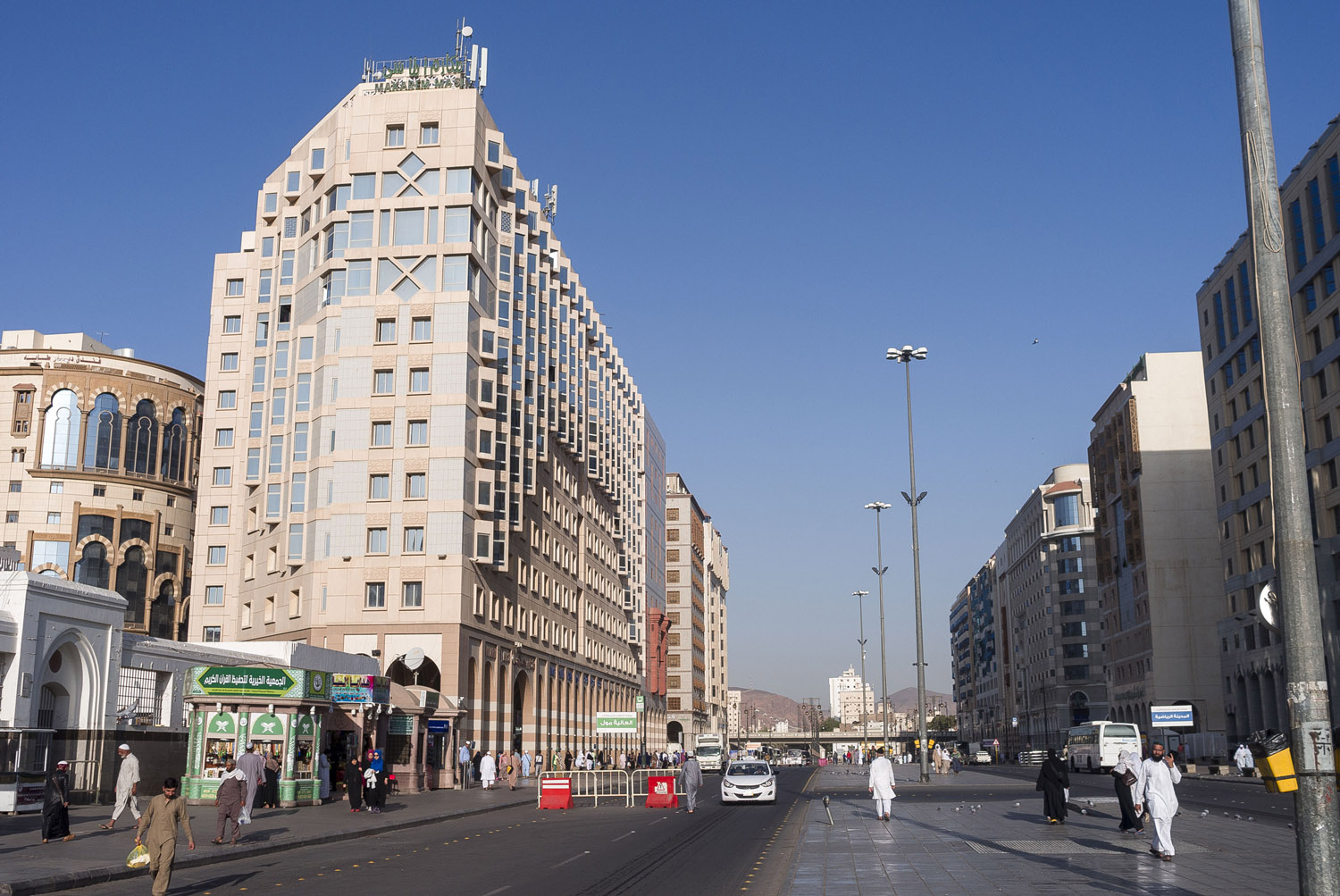
Hundreds of hotels line up along the streets. Hotels, hotels, hotels. The whole city is one big hotel.
Every year, millions of pilgrims come to Saudi Arabia to perform the Hajj. The rest of the time, people come here to complete the lesser pilgrimage, Umrah. Only due to such pilgrim pipeline this city’s alive.
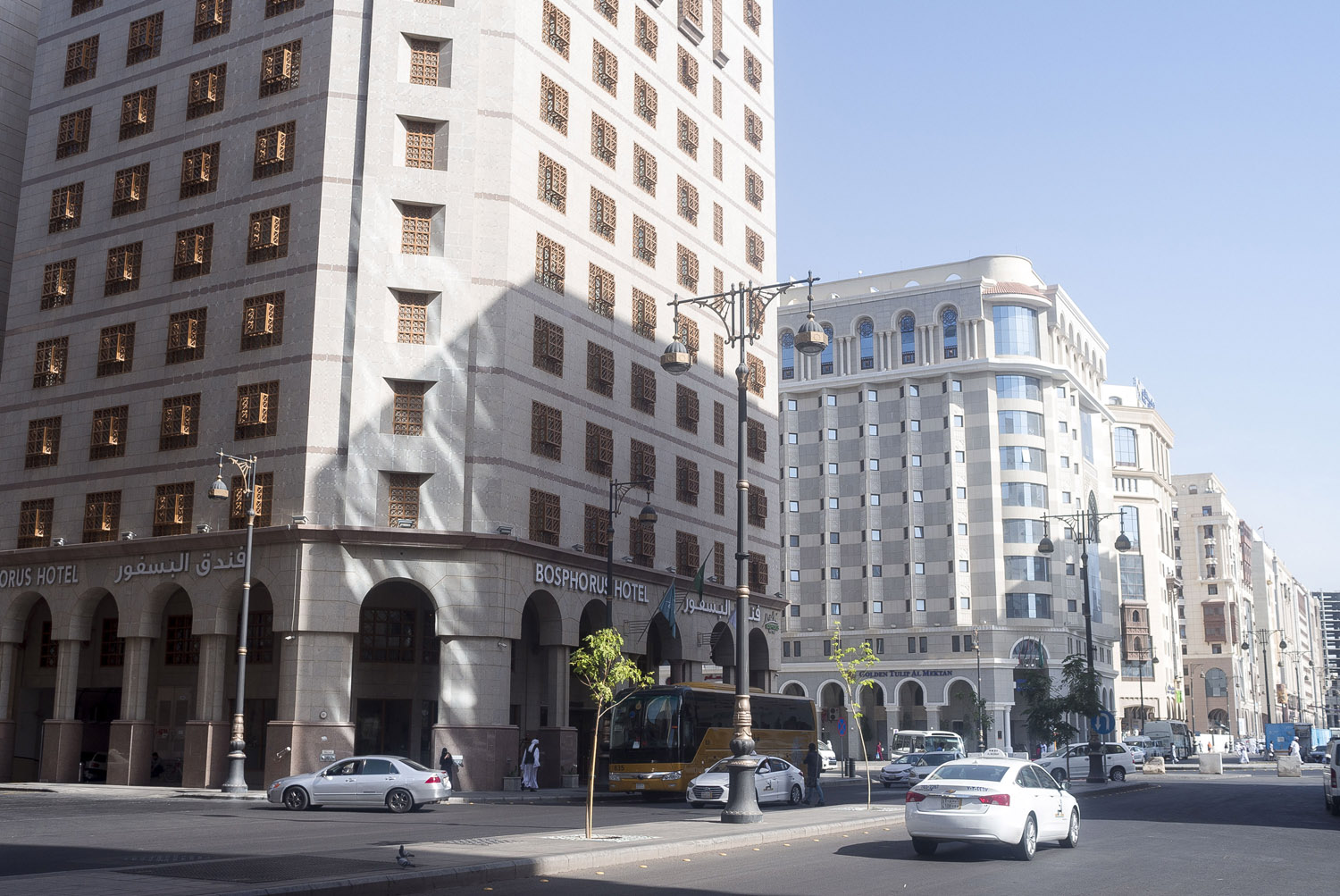
No transportation in Medina either. None at all. The city is very small, and everyone walks. Only endless shuttle buses bring pilgrims to hotels and take them to the airport.
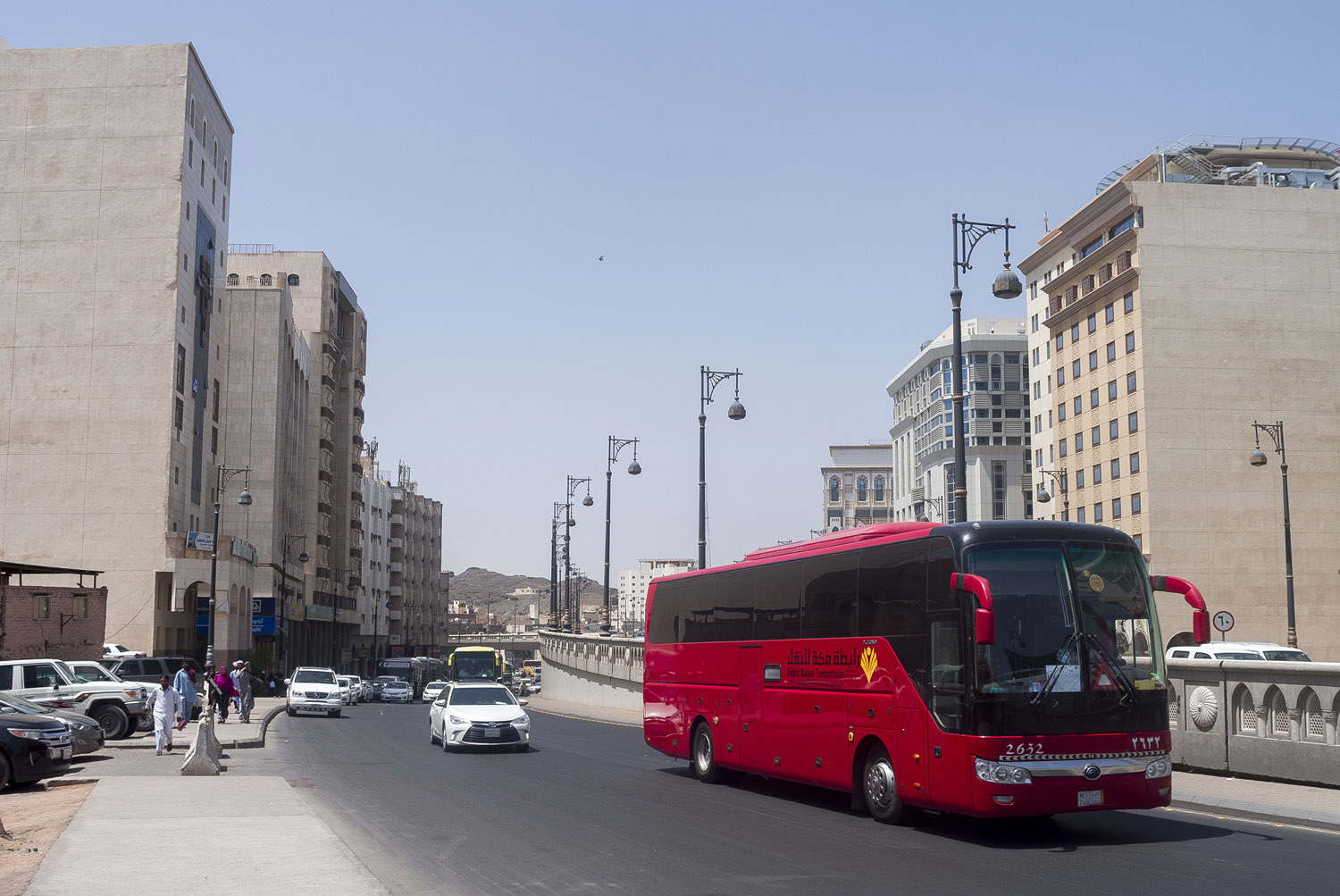
Well, what lies beyond the row of hotels is quite clear. Where the tourist sector ends, there begins destitution and poverty.
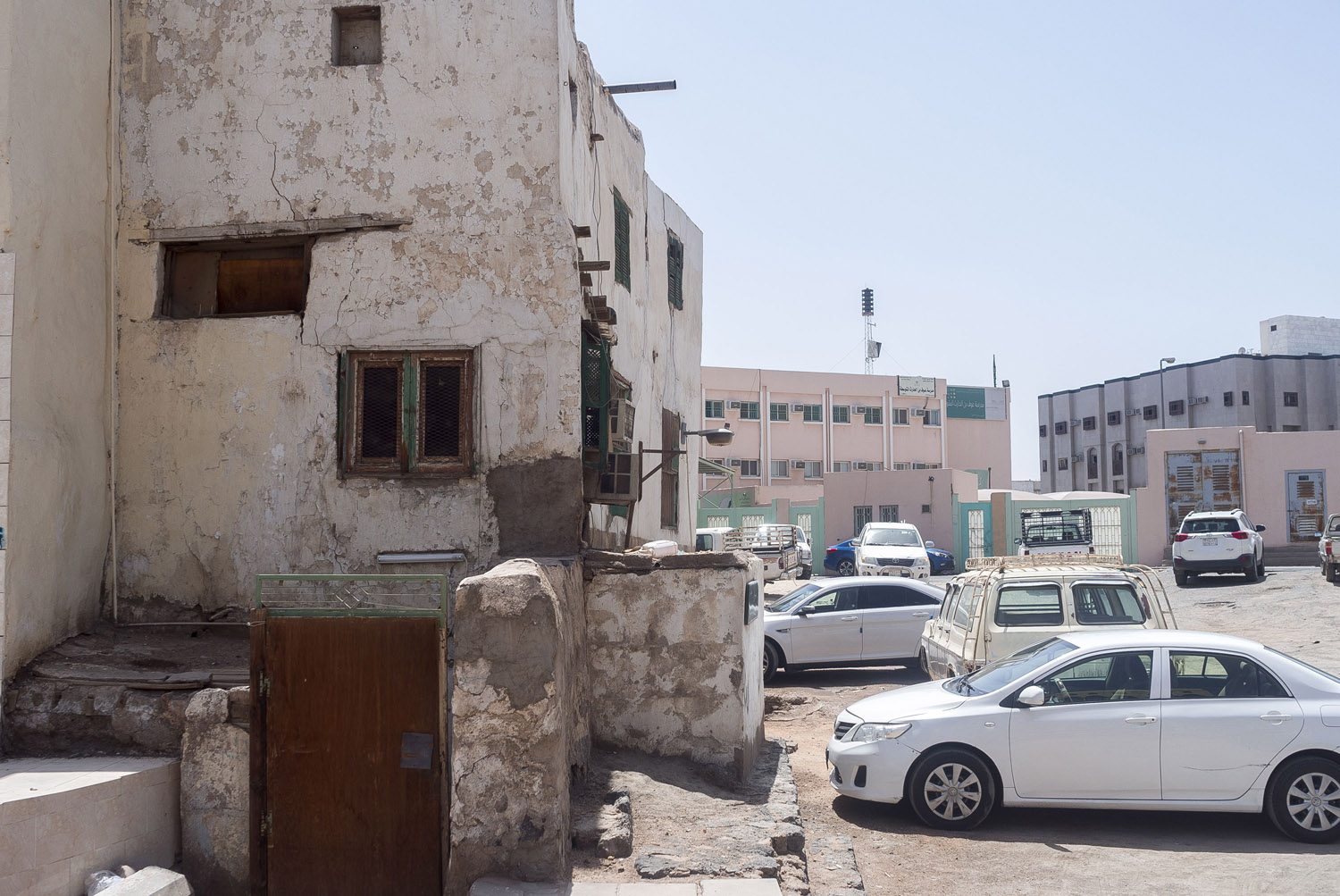
However, there is no point in looking at poverty in these holy places. Here and now, we are heading to Mecca.


